
Table of Contents
A500 Mini Review: Is This the Ultimate Retro Gaming Device?
Are you a fan of classic gaming and looking for a way to relive the golden age of retro computing? Look no further than The A500 Mini by Retro Games.
This compact reimagining of the iconic Amiga 500 from the 1980s boasts perfect emulation of the original OCS and ECS chip sets, as well as the advanced AGA architecture of the A1200. With 25 classic Amiga games included and the ability to side-load your own games via USB stick, you can enjoy all-time favorites like Alien Breed 3D, Another World, Simon the Sorcerer, and Worms.
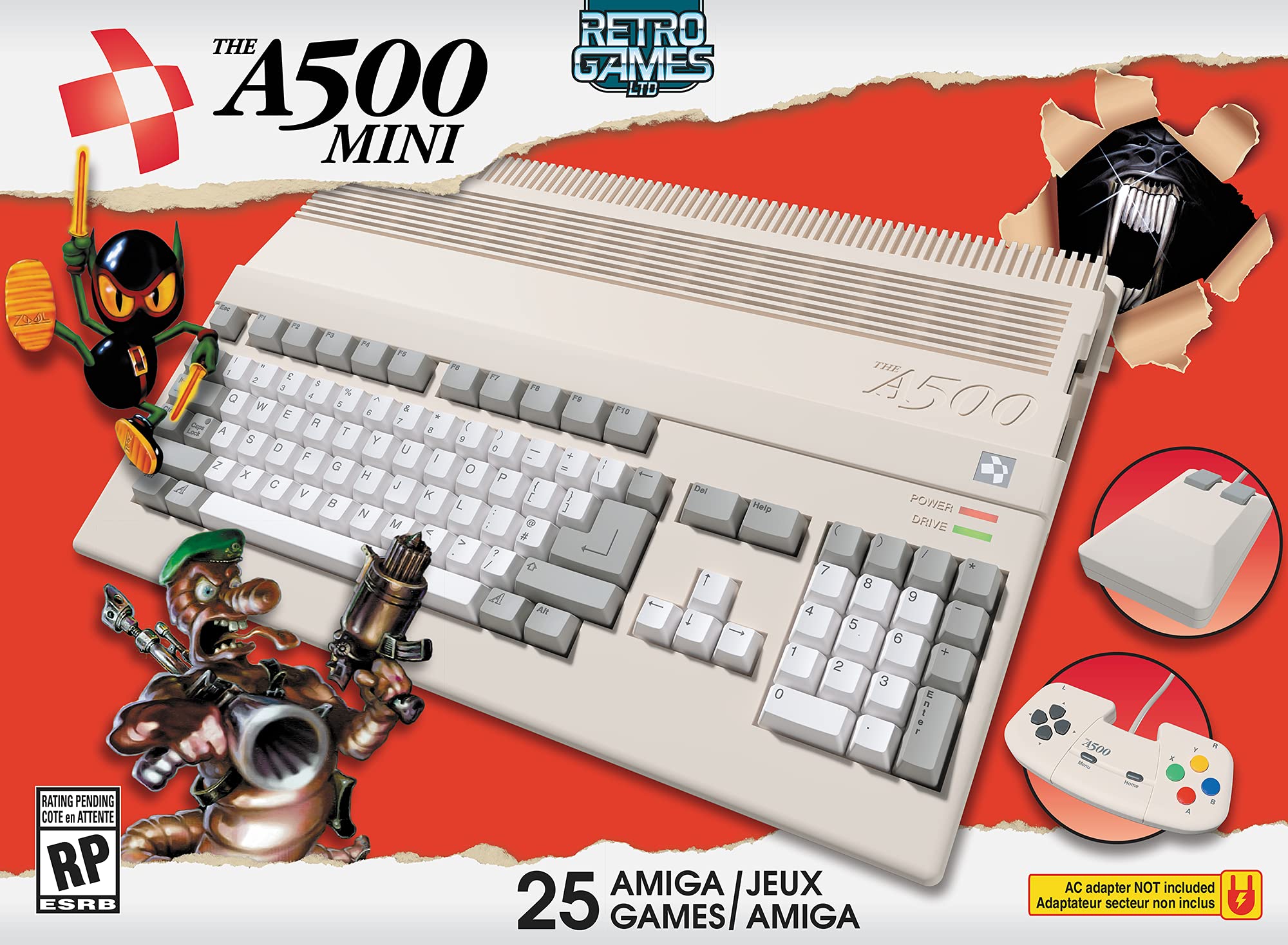
The A500 Mini comes with the original style 2-button mouse and an 8-button precision gamepad for your choice of control method. You can even plug in an external standard USB PC keyboard for additional functionality.
Some noteworthy features include the ability to save and resume your game at any time, 720p HD output via HDMI, and multiple scaling options with a CRT filter for an authentic retro experience.
Bottom Line
For retro gaming enthusiasts, The A500 Mini is a must-have. Its perfect emulation, included games, and side-loading capabilities make it a great value. Click here to purchase The A500 Mini and relive the glory days of retro computing today!
The A500 Mini: A Compact Reimagining of the Classic Home Computer
We were impressed by The A500 Mini, a compact reimagining of the classic home computer. It features perfect emulation of not only the original A500 (OCS) and Enhanced Chip Set (ECS) of future revisions, but also the Advanced Graphics Architecture (AGA) of the A1200. The A500 Mini comes with the original style 2-button mouse and newly engineered 8-button precision gamepad, allowing you to choose your control method.
One of the best things about The A500 Mini is the included 25 classic Amiga games, selected from a simple to use carousel, including all-time greats like Alien Breed 3D, Another World, Simon the Sorcerer, and Worms. You can also side-load your own games via USB stick with full WHDLoad support and an array of options to choose from. Plus, you can save and resume your game at any time to help you finish those punishingly difficult classics.
The A500 Mini is compatible with 100s of classic Amiga games and demos, utilizing WHDLoad for simplicity (games must be legally obtained/purchased from the legal owners), 50/60Hz in 720p HD via HDMI, Multiple scaling options & CRT filter. To compliment the on-screen keyboard, you can plug in an external standard USB PC keyboard for additional functionality.
Overall, we found The A500 Mini to be a great way to relive the golden age of computing. It’s perfect for those who want to experience the classic Amiga games but don’t have the space or budget for a full-sized computer.
Emulation Excellence: A500, 600 & 1200
We were blown away by the emulation capabilities of The A500 Mini. The compact reimagining of the classic home computer features perfect emulation of not only the original A500 (OCS) and Enhanced Chip Set (ECS) of future revisions, but also the Advanced Graphics Architecture (AGA) of the A1200. This means that we were able to enjoy an extensive library of classic Amiga games and demos.
We loved the fact that we could side-load our own games via USB stick with full WHDLoad support and an array of options to choose from. Plus, the save and resume game functions helped us finish those punishingly difficult classics. The A500 Mini is compatible with 100s of classic Amiga games and demos, utilising WHDLoad for simplicity (games must be legally obtained/purchased from the legal owners).
Overall, the emulation excellence of The A500 Mini is truly impressive. It’s a must-have for any retro gaming enthusiast looking to relive the glory days of 16-bit personal computing.
Gaming Experience: 25 Classic Amiga Games
We were thrilled to try out the 25 classic Amiga games included with The A500 Mini. The games were easy to access through a simple to use carousel. We enjoyed playing all-time greats like Alien Breed 3D, Another World, Simon the Sorcerer and Worms. The gaming experience was smooth and seamless, and the graphics were stunning in 720p HD via HDMI. We also appreciated the ability to side-load our own games via USB stick with full WHDLoad support.
One thing to note is that the games must be legally obtained/purchased from the legal owners. However, with the vast compatibility of the A500 Mini with 100s of classic Amiga games and demos, there are plenty of options to choose from. We also appreciated the option to save and resume our game at any time, which came in handy for those punishingly difficult classics. Overall, we were thoroughly impressed with the gaming experience on The A500 Mini and highly recommend it to any retro gaming enthusiast.
Customization: Side-Load Games via USB
One of the best features of The A500 Mini is the ability to side-load games via USB. This opens up a whole world of possibilities for gamers who want to play their favorite classic Amiga games that are not included in the pre-installed selection. The process is simple and straightforward, just plug in your USB stick and select the game you want to play from the menu. With full WHDLoad support and an array of options to choose from, the possibilities are endless. We were able to easily add our own games and play them without any issues.
Overall, we found the customization options to be a great addition to The A500 Mini. Being able to side-load our own games made the console even more versatile and enjoyable to use. We highly recommend taking advantage of this feature and adding your own favorite classic Amiga games to the mix.
Pros and Cons
After spending some time with The A500 Mini, we have compiled a list of pros and cons to help you make an informed decision before purchasing.
Pros
- Authentic retro gaming experience: The A500 Mini perfectly emulates the original A500 and Enhanced Chip Set (ECS) of future revisions, as well as the Advanced Graphics Architecture (AGA) of the A1200, giving players an authentic 16-bit personal computing experience from the 1980s.
- 25 classic Amiga games included: The A500 Mini comes with 25 classic Amiga games, including Alien Breed 3D, Another World, Simon the Sorcerer and Worms, all of which are easily accessible through a simple-to-use carousel.
- Side-load your own games: With full WHDLoad support and an array of options to choose from, players can side-load their own games via USB stick. Additionally, players can save and resume their game at any time, making it easier to finish those punishingly difficult classics.
- Compatibility with hundreds of classic Amiga games and demos: The A500 Mini is compatible with hundreds of classic Amiga games and demos, utilizing WHDLoad for simplicity. However, it should be noted that games must be legally obtained/purchased from the legal owners.
- Multiple scaling options and CRT filter: The A500 Mini offers multiple scaling options and a CRT filter, allowing players to customize their gaming experience.
Cons
- Limited game selection: While The A500 Mini comes with 25 classic Amiga games, the selection is limited and may not appeal to all players.
- Poor joystick compatibility: Some users have reported problems with the joystick, and the device itself has a poor level of compatibility with disk images.
- Limited LHA archive support: In order to run programs other than those included, users must have LHA archives. This may be an issue for those who do not have access to these archives.
- Regular Amiga emulator performance: Some users have reported that The A500 Mini is essentially a regular Amiga emulator with poor level of performance and compatibility.
Overall, The A500 Mini is a great option for those looking to experience retro gaming at its finest. While there are some limitations, the authentic retro gaming experience, ability to side-load games, and compatibility with classic Amiga games make it a worthwhile purchase for any retro gaming enthusiast.
Customer Reviews
We scoured through the customer reviews of Retro Games’ The A500 Mini, and we found that the majority of the users are satisfied with the product. Many of them expressed their nostalgia for the classic Amiga 500 and praised the device for bringing back the memories of their childhood.
Some users pointed out that the device is easy to set up and use. They also appreciated the regular keyboard support and the ability to use a USB hub. However, a few users had issues with the joystick and the device’s compatibility with disk images.
Overall, the customer reviews indicate that The A500 Mini is a great miniature representation of the classic Amiga 500. It’s a perfect device for those who want to relive the golden age of gaming.
Conclusion
Overall, we highly recommend The A500 Mini for anyone looking to relive the glory days of 16-bit personal computing. With its perfect emulation of the Amiga 500, 600, and 1200, as well as its support for WHDLoad and USB stick loading, this compact reimagining of a classic home computer offers endless hours of nostalgic gaming fun.
We were particularly impressed with the included 25 classic Amiga games, which were selected from a simple-to-use carousel and included all-time greats like Alien Breed 3D, Another World, Simon the Sorcerer, and Worms. Plus, with the ability to save and resume gameplay at any time, even the most punishingly difficult classics can be conquered.
The original-style 2-button mouse and newly engineered 8-button precision gamepad provide a choice of control methods, while the option to plug in an external standard USB PC keyboard for additional functionality is a welcome addition. The A500 Mini is also compatible with 100s of classic Amiga games and demos, utilizing WHDLoad for simplicity.
While some users may experience compatibility issues with disk images and LHA archives, we found that using a USB with our own games was a breeze. The device looks amazing on our 55-inch TV, and the multiple scaling options and CRT filter provide a truly authentic retro gaming experience. Overall, we think The A500 Mini is a must-have for any retro gaming enthusiast.
Frequently Asked Questions
What is the price of the A500 Mini?
The A500 Mini is priced at a reasonable cost, making it an affordable option for those who want to relive the nostalgia of classic Amiga games. The price is competitive with other retro gaming consoles on the market.
What does the A500 Mini box include?
The A500 Mini comes with everything you need to get started, including the console itself, an 8-button precision gamepad, a 2-button mouse, and an HDMI cable for connecting to your TV. The box also includes a power supply and a quick start guide to help you set up your console.
How can I add games to the A500 Mini?
Adding games to the A500 Mini is easy. Simply use a USB stick to transfer your game files to the console. The A500 Mini supports full WHDLoad support, so you can side-load your own games with an array of options to choose from. Plus, you can save and resume your game at any time to help you finish those punishingly difficult classics.
What is the CPU of the A500 Mini?
The A500 Mini features a 16/32-bit CPU, just like the original Amiga 500. This allows for perfect emulation of not only the original A500 (OCS) and Enhanced Chip Set (ECS) of future revisions, but also the Advanced Graphics Architecture (AGA) of the A1200.
Is the A500 Mini 50 or 60 hertz?
The A500 Mini supports both 50 and 60 hertz in 720p HD via HDMI. This allows you to choose the best refresh rate for your TV or monitor.
Can the A500 Mini be hacked to add more features?
While we do not condone hacking or modifying the A500 Mini, there are ways to add more features to the console. However, doing so may void your warranty and could potentially damage your console. We recommend using the A500 Mini as it was intended to be used, to ensure the best possible gaming experience.
Retro Games has released the latest games system to get on the ‘mini’ revival: the Amiga 500.
An officially licenced product, the A500 Mini promises a return to the glory days of 16-bit home computing, with 25 Amiga games built in, and the potential to add more via a USB stick. While it looks like the Amiga 500, Retro Games points out that the hardware offers the “perfect emulation” of the A1200’s Advanced Graphic Architecture too.
25 of the bundled titles have been revealed, and there are undoubtedly some classics in there including Simon the Sorcerer, Speedball 2, Zool and Worms: The Director’s Cut.
Other titles include Alien Breed 3D, Another World, ATR: All Terrain Racing, Battle Chess, Cadaver, Pinball Dreams, The Chaos Engine and Kick Off 2 – which hopefully doesn’t rule out arch-rival Sensible World of Soccer making an appearance. Other titles, Retro Games says, will be revealed “at a later date”.
Like previous retro replicas including the NES Classic Mini, SNES Classic Mini, Mega Drive Mini and PlayStation Classic, the A500 Mini is a dinky recreation of the original hardware. That means the keyboard is entirely for show – though Retro Games says that you can plug in an actual keyboard, if the on-screen one is proving too fiddly. In the box, you’ll find a “newly engineered” 8-button gamepad and the original two-button mouse.
With the ability to save progress to “help you finish those punishingly-difficult classics”, 50- or 60Hz screen refresh and a CRT filter, the company is confident that the A500 Mini will enjoy similar success to other retro revivals. And the product has already got an early thumbs up from Team 17 CEO Debbie Bestwick.
“Retro Games have developed a truly unique product”, she said, “and I’m very excited to have our classic games represented in all their original glory”.
Does the a500 Mini have a working keyboard?
The a500 Mini does not have a functioning keyboard. You can plug any USB keyboard into it though.
Can you add games to Amiga Mini?
Yes you can use WHDload Games with the A500mini.
What are WHDLoad games?
WHDload is a program that allows you to download and install games without a physical disk. It is an excellent option for those who don’t have access to the original disks or want to keep their classic games safe by using the program.
Where can I download Amiga games?
There are many websites that have a lot of games for Amiga computers. If you need to download games that you can’t find, one website is FreeMSX.com. If you are looking for an emulator to play classic games on your computer, EmulationZONE has a lot of great emulators and plugins that allow you to play all kinds of classic games on your computer.
What is Amiga ROM?
Amiga ROM, or Read Only Memory, is a type of computer memory which has been used in personal computers and home computers that can be read only. It is often used as the main memory for these computers because it is faster than other types of memories such as RAM.
The A500 Mini console games list
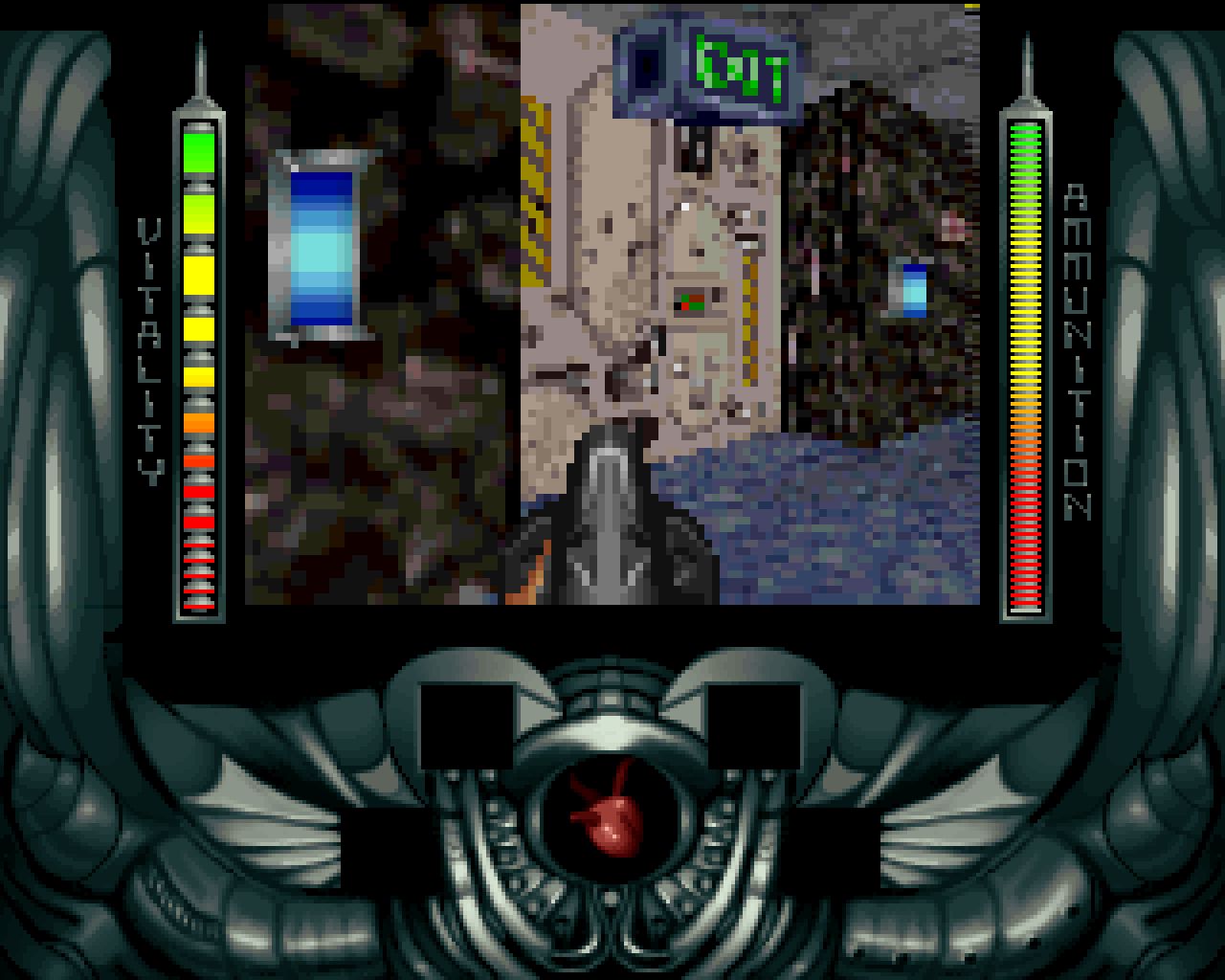
Alien Breed 3D (1995)
Whatever you do, don’t make this the first game you play when you unpack your new A500 Mini. Or maybe you should, because everything after it is going to end up looking like a graphical masterpiece by comparison. Alien Breed 3D isn’t a bad game per se, but it is one that should never have been attempted on the Amiga. Doom had come out a couple of years earlier though and so the race was on to make a 3D shooter for the Amiga as well. In gameplay terms it is similar, but the graphics are so indistinct it feels like you’re playing the entire game with the wrong glasses on. It was also only ever released on the CD32 and Amiga 1200 and 4000 models, so technically it shouldn’t be included here anyway.
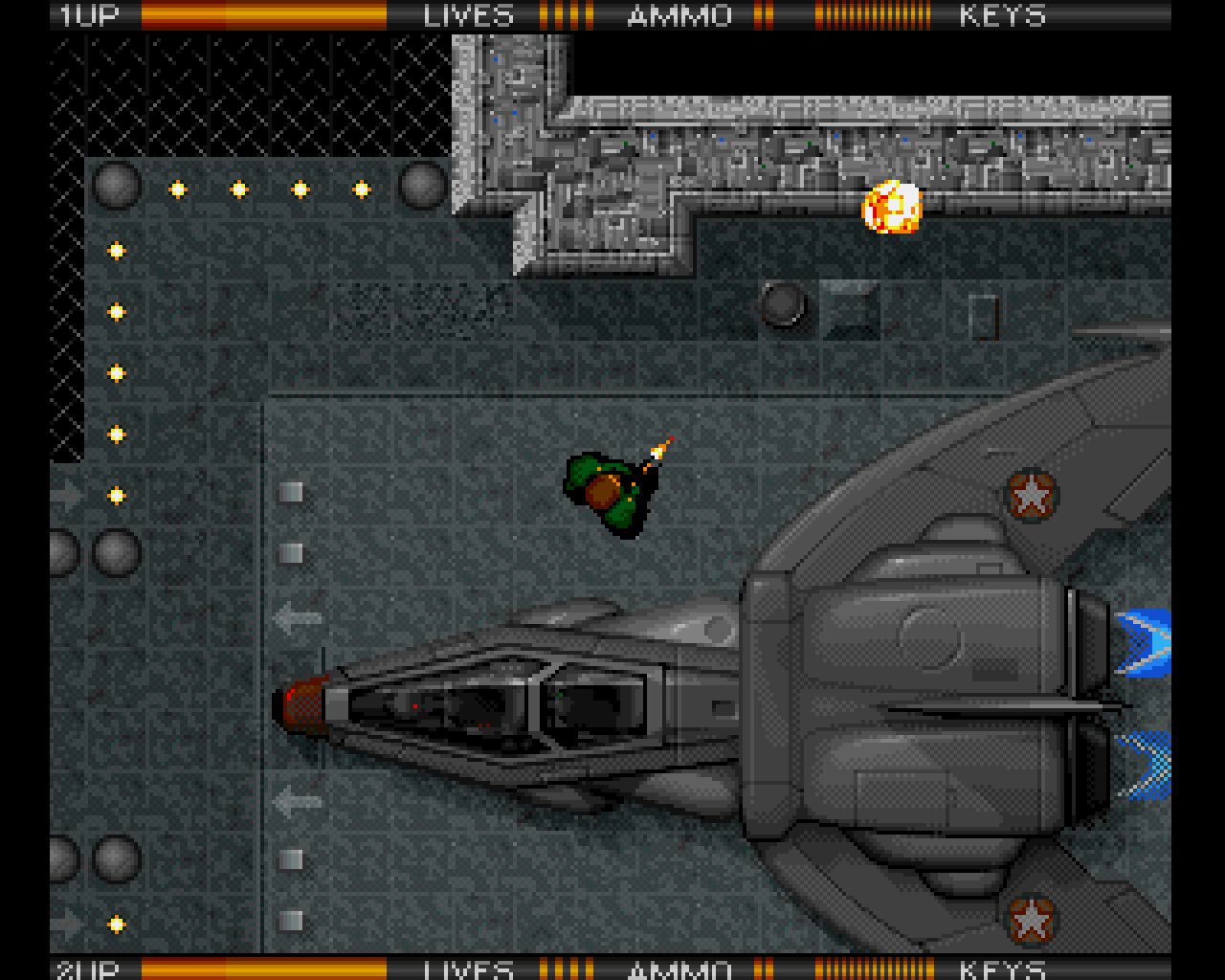
Alien Breed: Special Edition 92 (1992)
It’s a good job nobody bothered to sue video game companies for plagiarism back in the 90s, because Alien Breed is not just inspired by Aliens it steals almost every possible detail from the film – short of calling the main character Ripley. That shouldn’t be seen as a negative though as the game clearly understands the magic of the films very well, since it doesn’t just throw aliens at you at a random but keeps them in hiding for surprisingly long periods before suddenly overwhelming you. It’s a shame it’s so needlessly difficult but the co-op option does help compensate for it and for such a simple, top-down shooter it’s surprisingly tense.
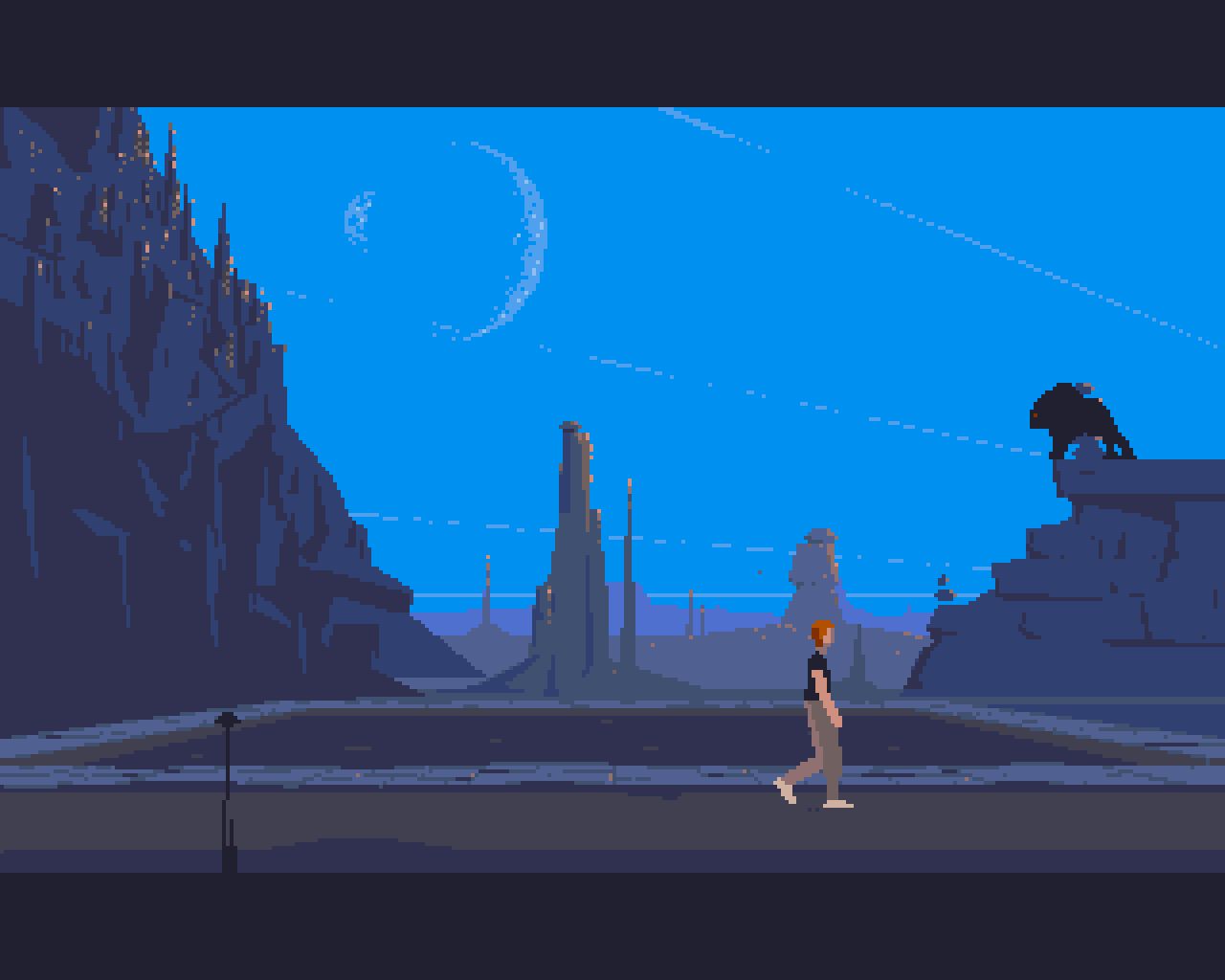
Another World (1992)
People were already using the word cinematic to describe video games in the early 90s but usually only in regard to cut scenes. However, Another World looked like a movie while you were playing it (assuming it was an animated movie with a stark, flat polygon art style). Essentially a 2D platformer, at the time of its release Another World’s animation and presentation was a revelation. While it only lasts a few hours, and relies far too much on trial and error, it’s an important landmark in video game history and fully deserves its place here. French creator Éric Chahi is still working today, but despite assumptions at the time, he had nothing to do with Flashback from the same publisher.
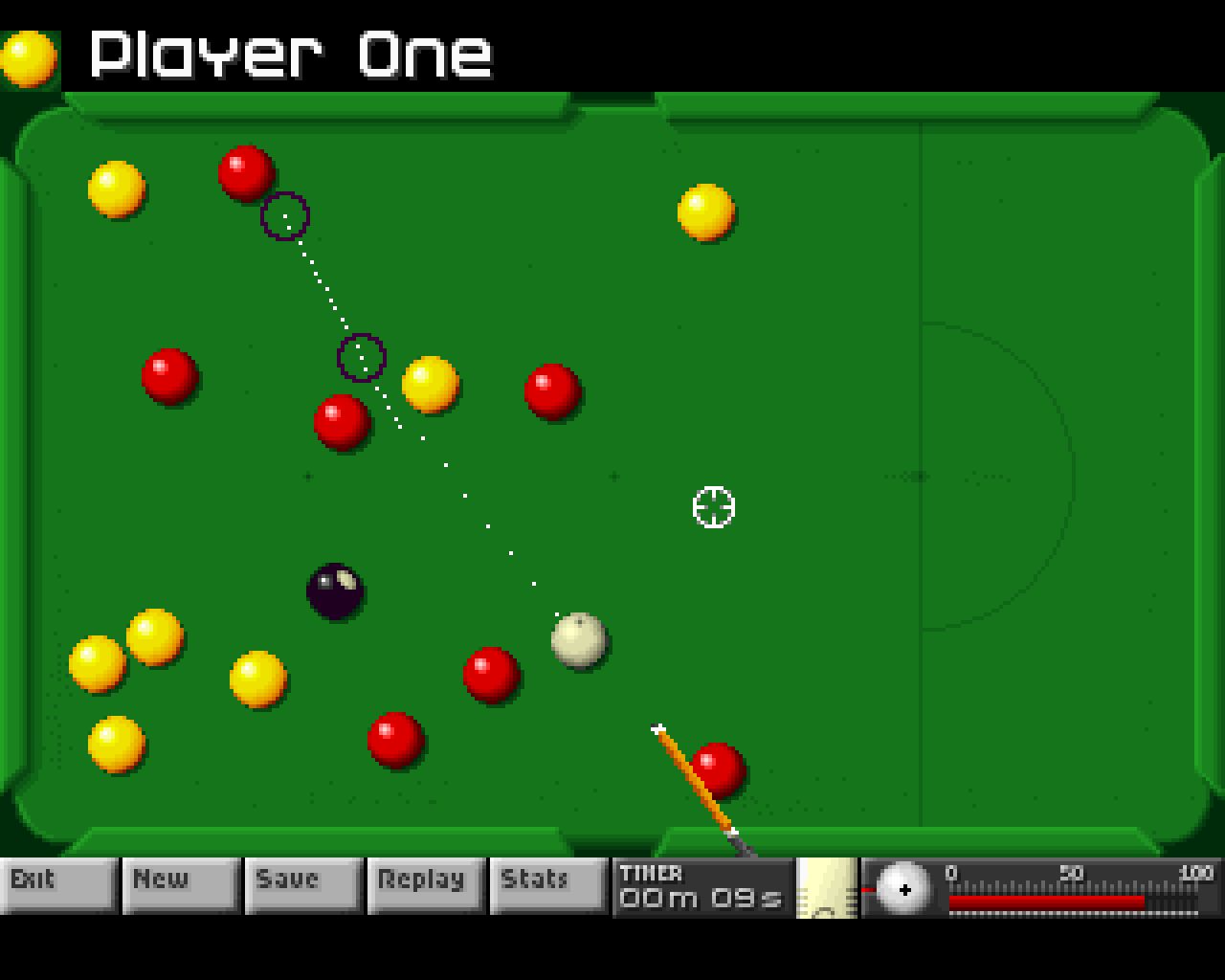
Arcade Pool (1994)
Don’t get excited, this isn’t the classic Archer Maclean’s Pool (follow-up to the even more iconic Jimmy White’s ‘Whirlwind’ Snooker) but a 2D top-down effort from Team17. As you’ll see, there are a lot of games on the mini-console that are essentially placeholders for other more famous games, in an attempt, presumably, to give a more accurate impression of the sheer breadth of the Amiga’s catalogue of games – many of which are now part of dead or dying genres. That said, this is a perfectly reasonable replacement, with convincing physics and plenty of options.
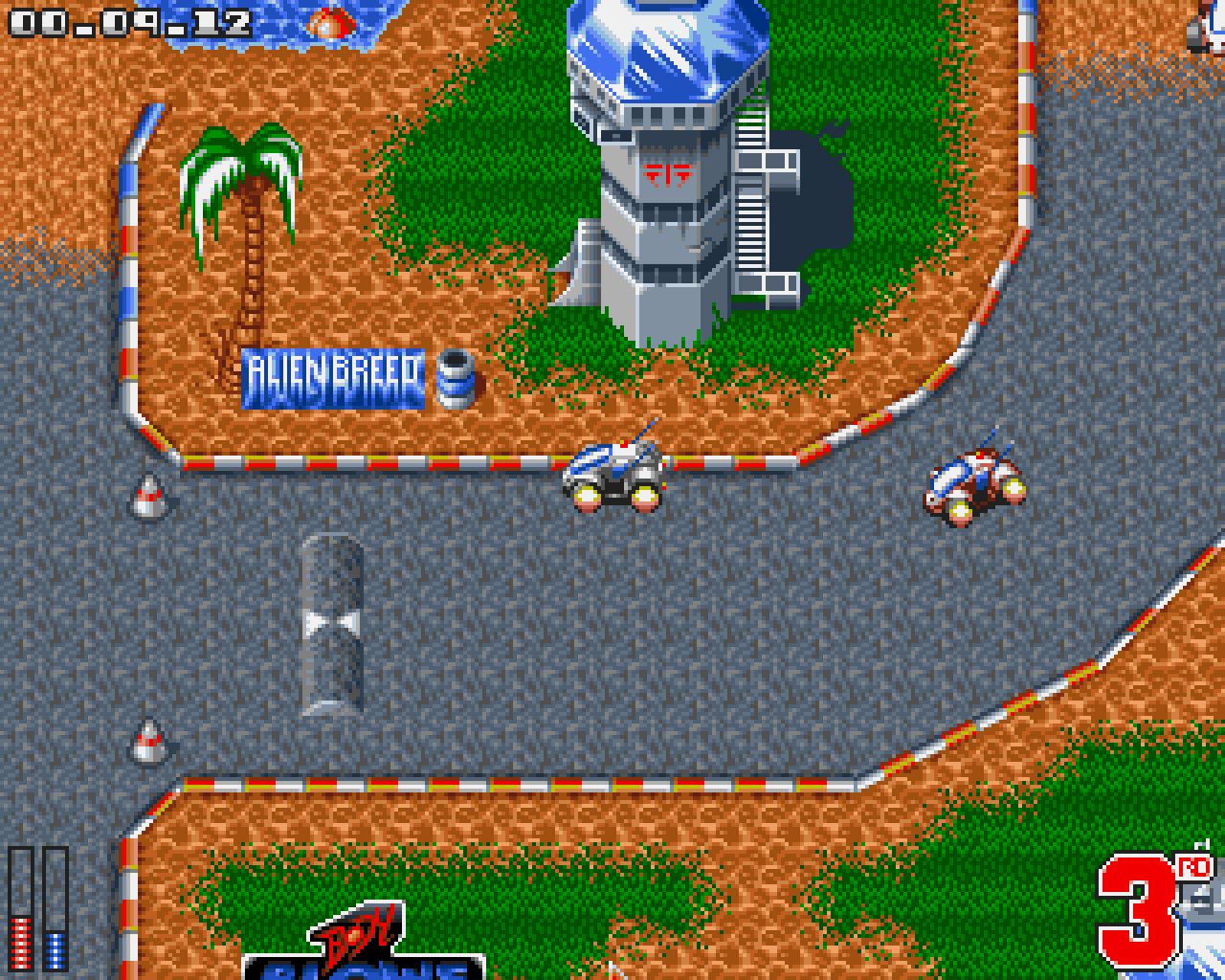
ATR: All Terrain Racing (1995)
One of the few games on the mini-console that we’ve never heard of before, which isn’t surprising given it wasn’t released until the twilight of the Amiga’s career in 1995. It’s a top-down racer from Team17 with some really nice animation and, unfortunately, it’s the only objectively bad game on the mini-console. The twitchy controls are a constant irritation and you can never see enough of the course ahead of you, especially when you’re effectively invisible inside a tunnel. Even if you’re not the tracks are so poorly signposted it’s often not clear where you’re supposed to be going. But that’s fine, just don’t bother with this and play some more Super Cars 2 instead.
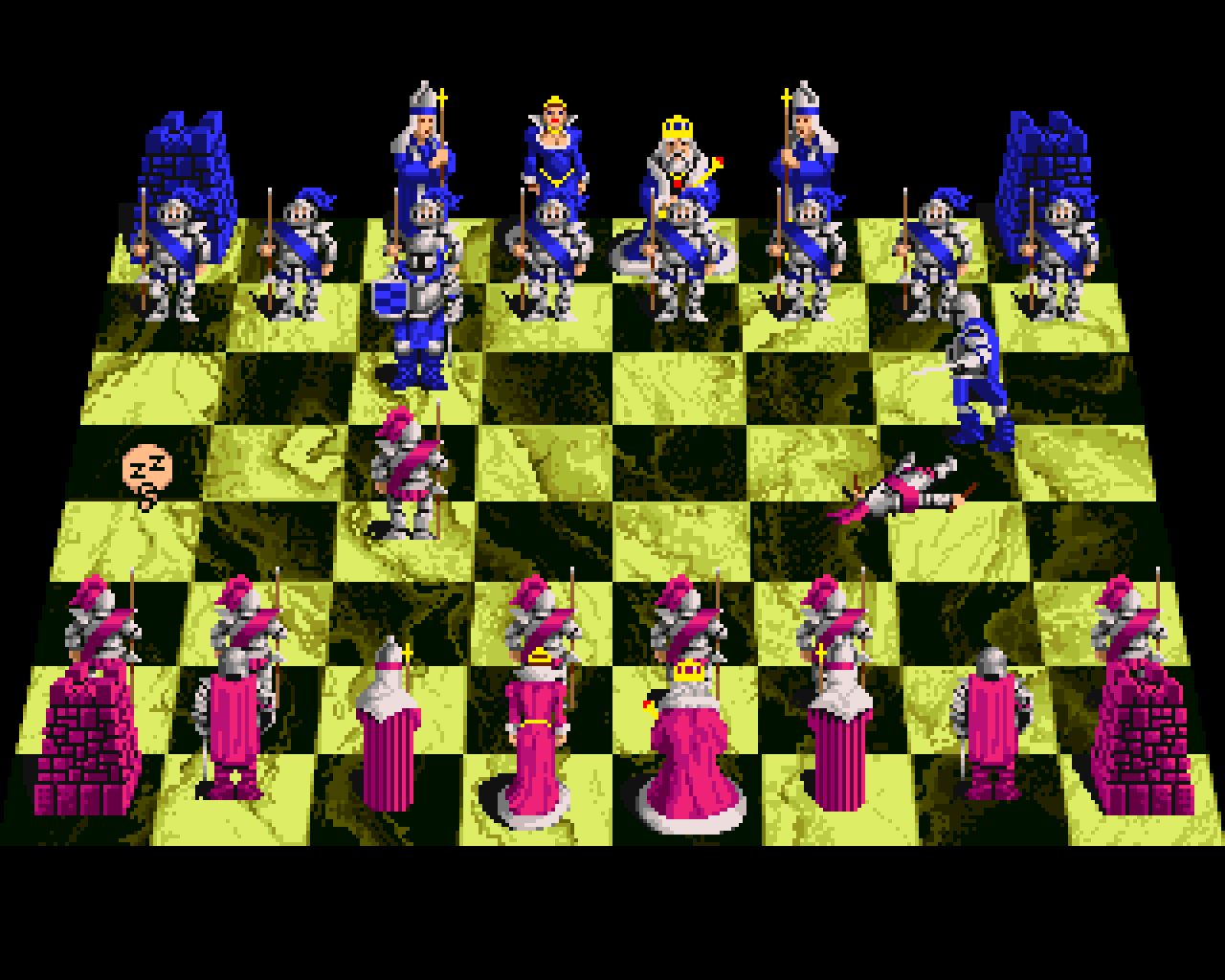
Battle Chess (1988)
This is what state-of-the-art graphics looked like in the late 80s. It is only chess, but this early EA game was lauded for its visuals and tempted those that would never usually dream of playing a chess sim into buying it. Although you can play it from a more sober top-down view the main appeal is the way the pieces are animated to attack each other, with each given their own weapons and personality. As a chess sim it’s not the best but as a gateway game it served a very useful purpose at the time.
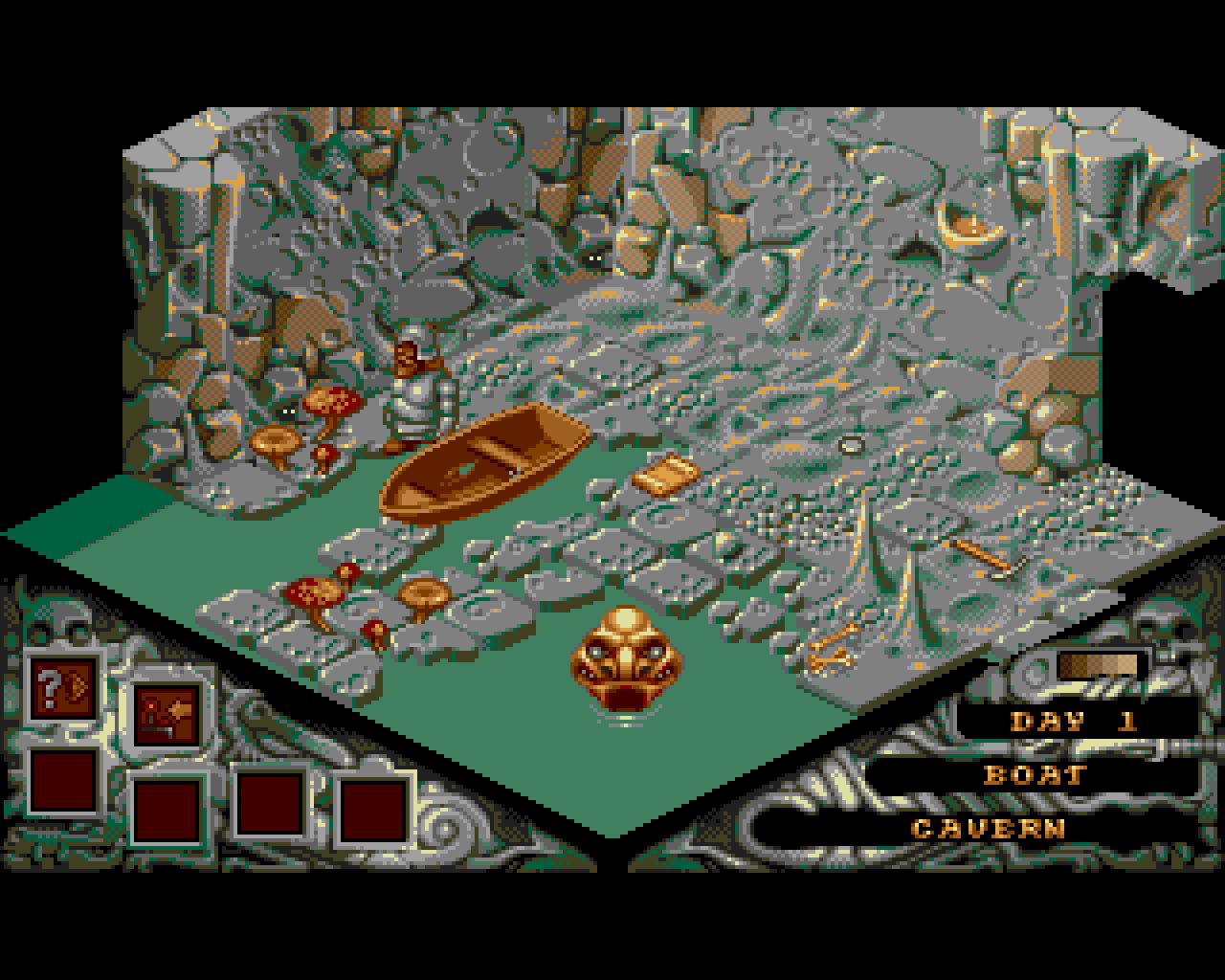
Cadaver (1990)
There’s much to admire about The Bitmap Brothers – one of the first ever ‘famous’ developers – but perhaps number one on the list is that although they always kept the same iconic art style almost all of their games were in completely different genres. This was their attempt at an Ultimate Play the Game (aka Rare) style isometric action adventure, and it’s generally very good. The graphic adventure style puzzles seem a little obscure nowadays, and the controls were fiddly even at the time, but the scope and complexity of the game is highly impressive.
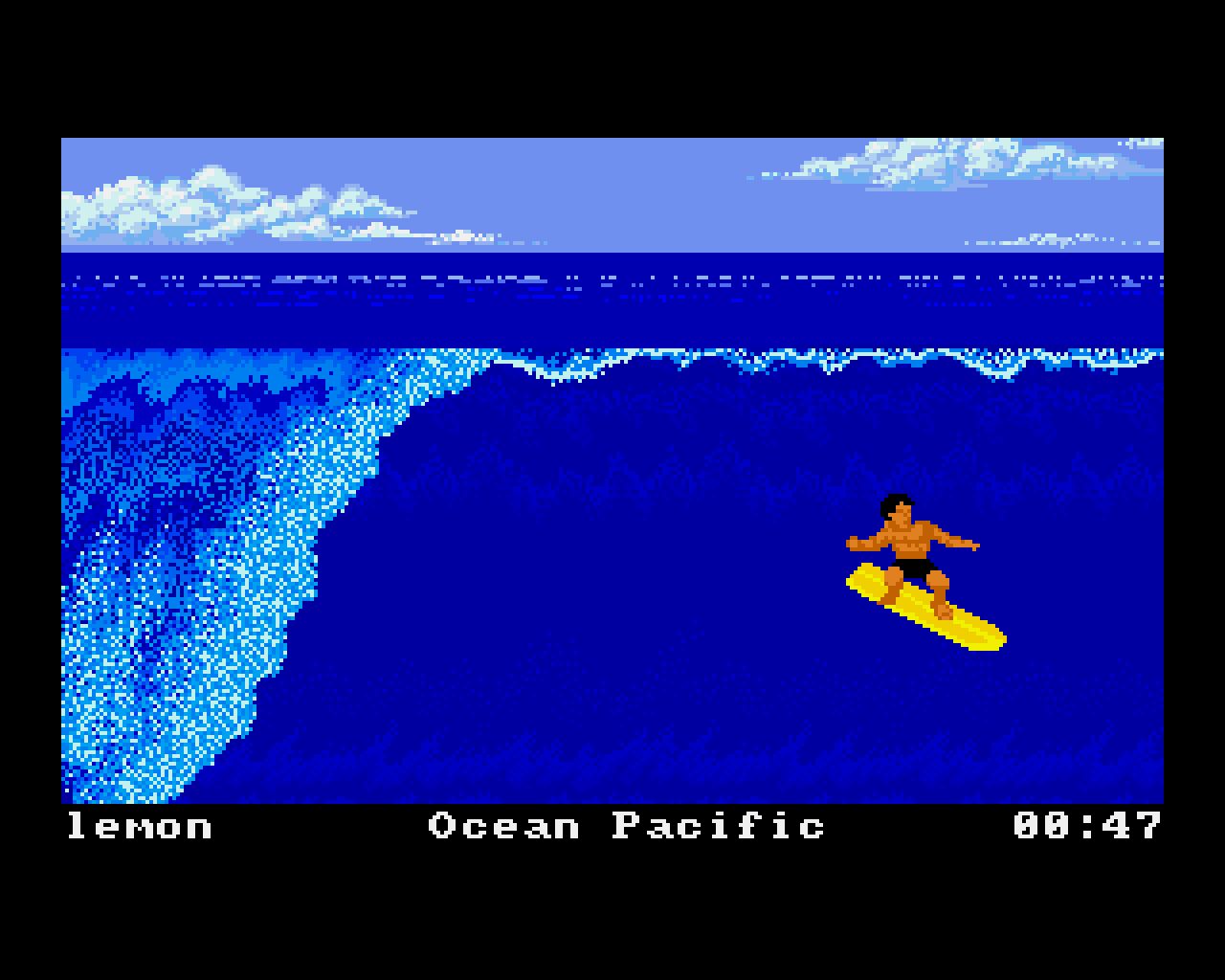
California Games (1988)
As with any format, many of the Amiga’s games were ported over from other devices or were remasters of earlier titles, and such is the case with California Games – which started life on the Commodore 64 and Apple II a year earlier. The most successful spin-off from Epyx’s Summer and Winter Games series, the included mini-games generally involve more than just button bashing and joystick waggling, with early attempts at a serious skateboarding sim, plus BMX, surfing, and roller-skating.
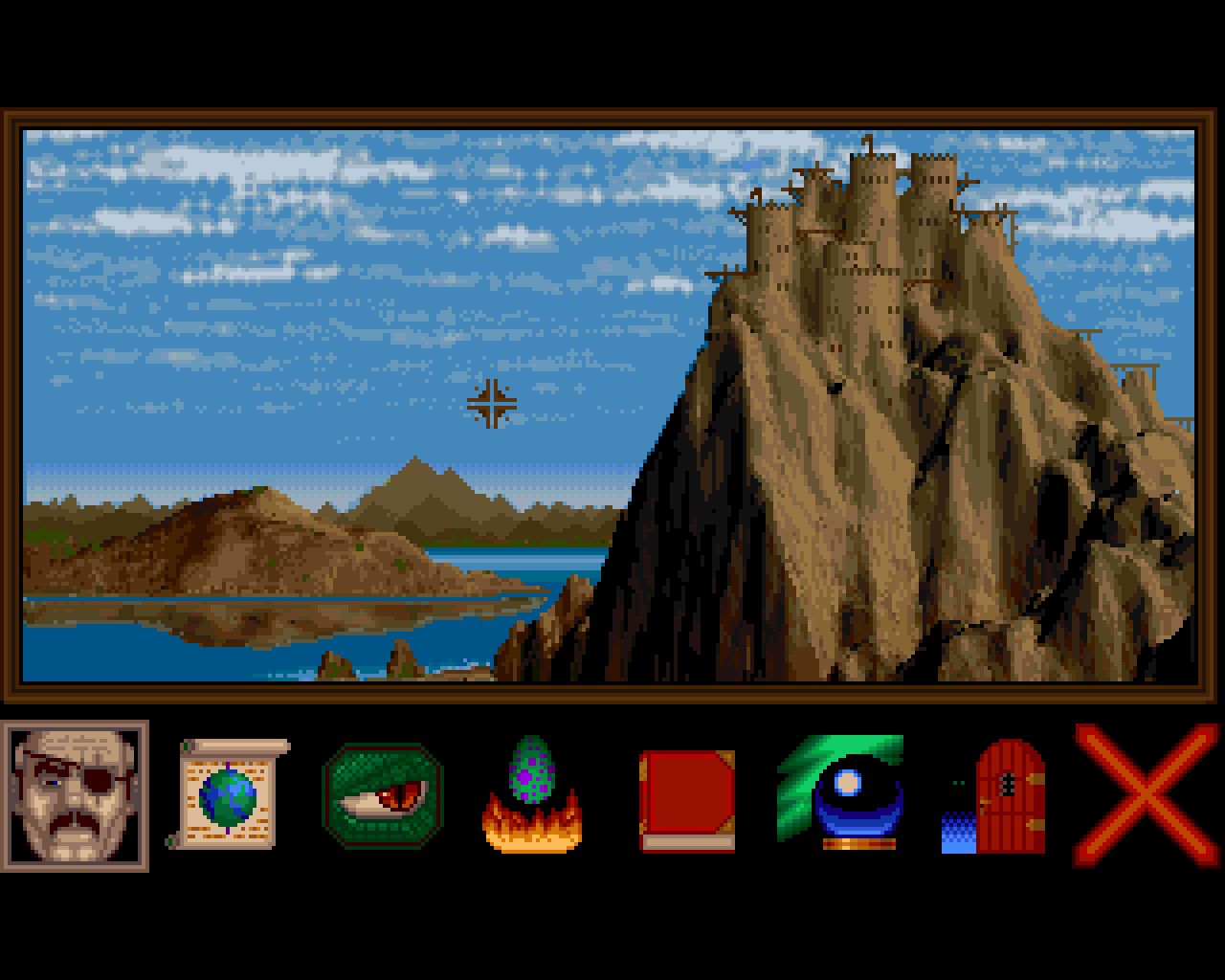
Dragon’s Breath (1990)
One of the most obscure games on the mini-console, in terms of both its notoriety and how it actually works. The heart of the game is a vertically scrolling shooter where you control a fire-breathing dragon, but there’s a substantial maintenance and strategy element back at your castle where you try to mix potions and hatch eggs to create ever more powerful beasts. The crafting element is surprisingly in-depth and there are other neat touches, such as villages rising and falling over the course of the game, but don’t even think of playing this one without first poring over the manual.
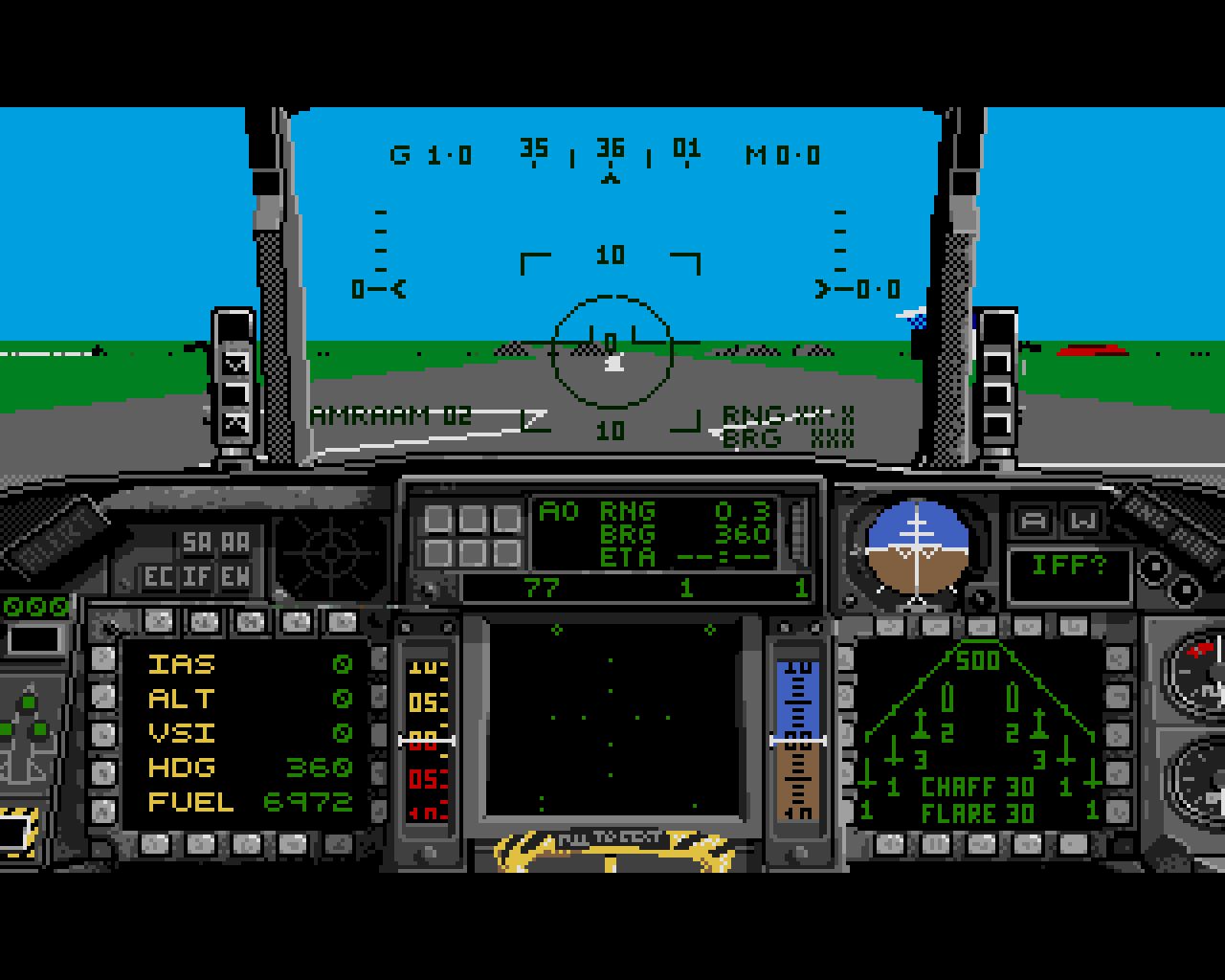
F-16 Combat Pilot (1989)
Technically there are still flight simulators being released today, but apart from the entirely non-violent Microsoft Flight Simulator nothing that’s ever aimed at a mainstream audience. Back in the late 80s and early 90s such things were relatively commonplace though and while F-16 Combat Pilot is neither the best nor the most well known (there are no MicroProse games on the mini-console) it’s still a competent example of the genre, even if the simplistic 3D graphics and digital controls seem incredibly old-fashioned today.
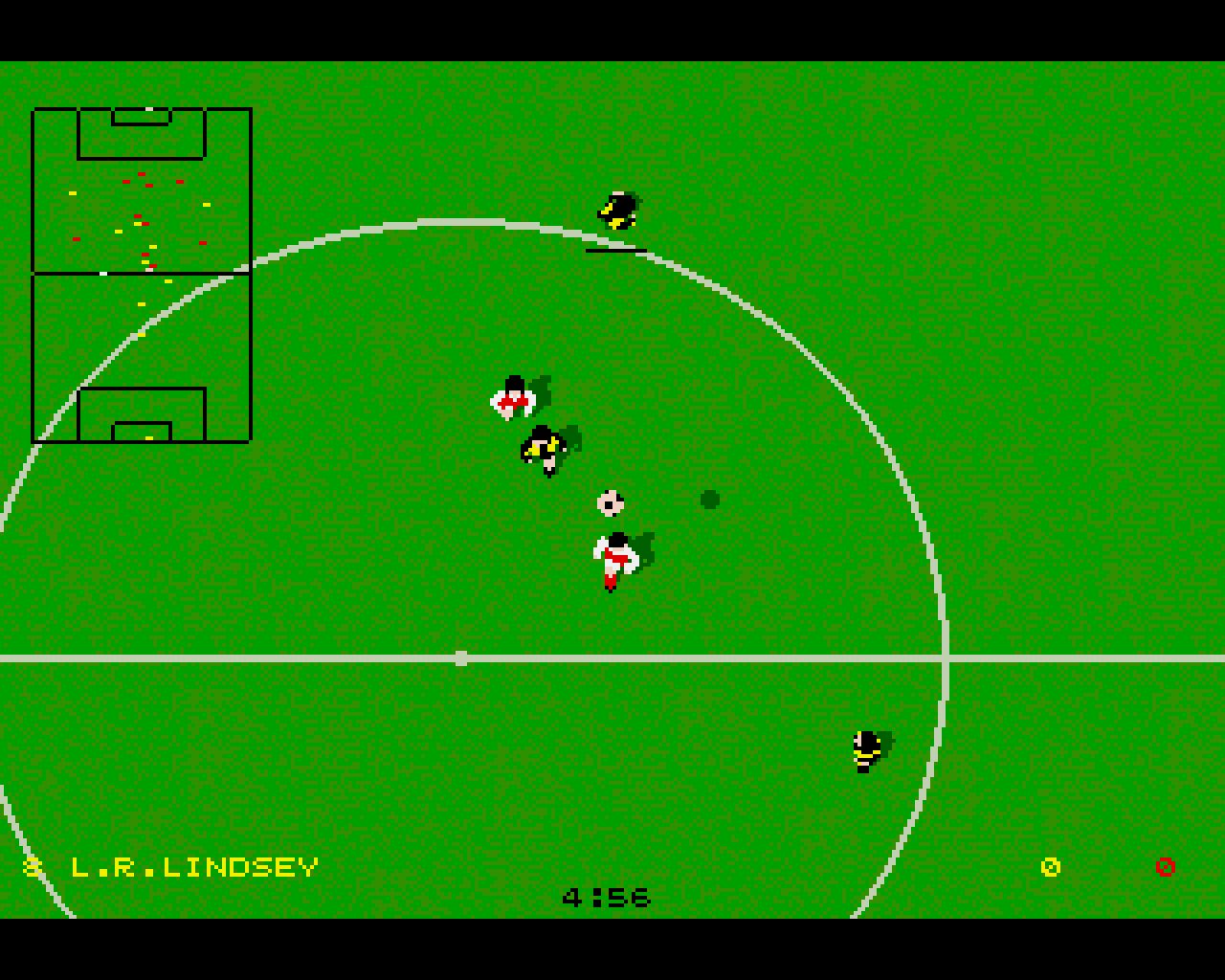
Kick Off 2 (1990)
As ubiquitous on the Amiga as FIFA is today on modern consoles, Anco’s classic vertically scrolling football sim is an icon of the system. It’s also not particularly good, so be prepared for disappointment if this is one of the games you’re most looking forward to playing again. In truth it was always flawed, and very buggy, which is what inspired Jon Hare and his team to make Sensible Soccer a couple of years later. Sadly, though, there are no Sensible Software games on the mini-console.
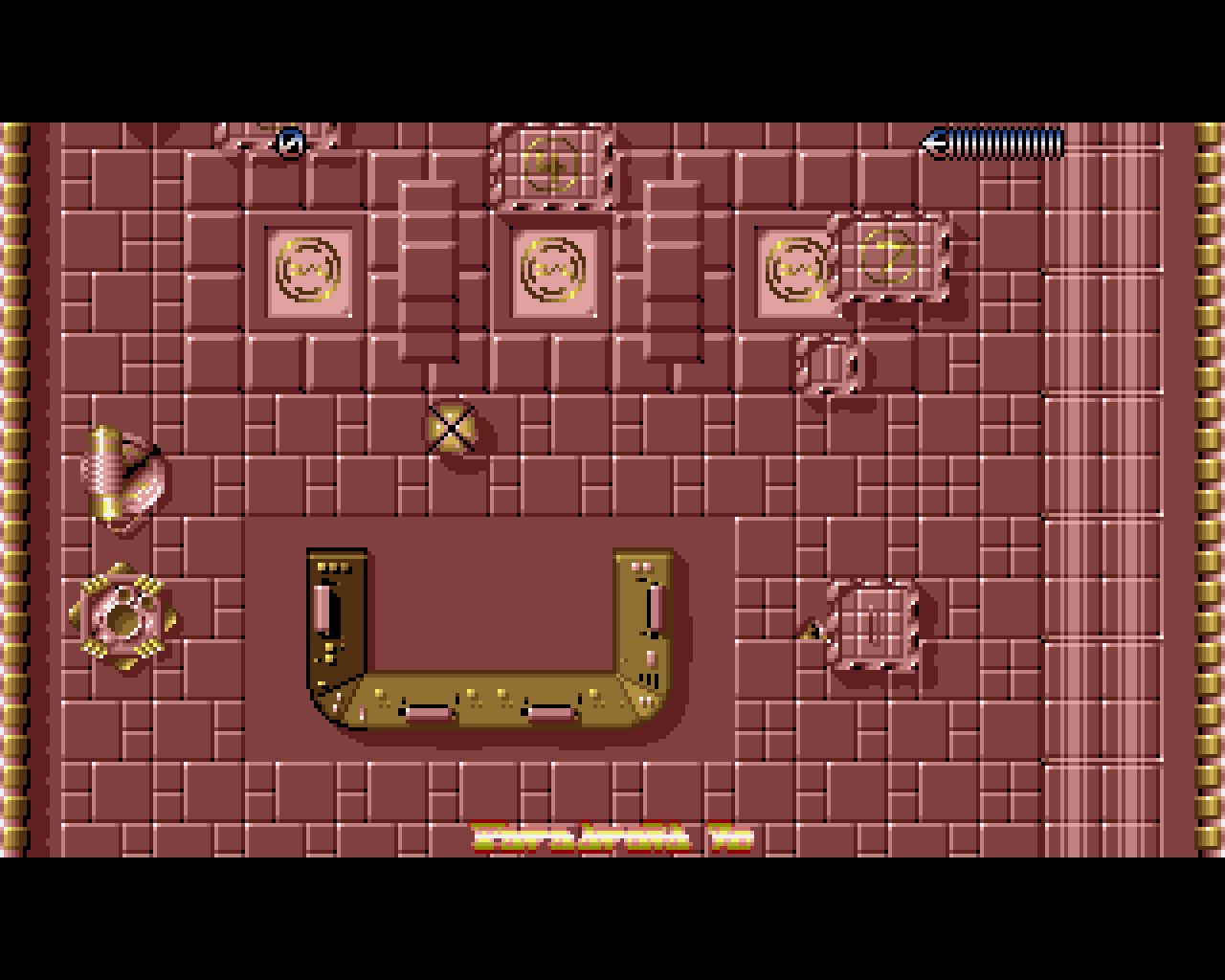
Paradroid 90 (1990)
It’s great to see Andrew Braybrook represented here, even if it’s, inevitably, not by his conversion of Rainbow Islands. We would’ve liked to have seen Uridium 2 as well, but this is an equally good upgrade of one of his classic Commodore 64 games. The original was extremely basic in terms of graphics and unfortunately so is the sequel, although the premise is still great: you control a robotic ’influence device’ in a top-down shooter where you can hijack increasingly more powerful robots to make use of their more advanced weaponry and armour. It’s an idea that’s only been used by a few other games over the years and definitely deserves another airing.
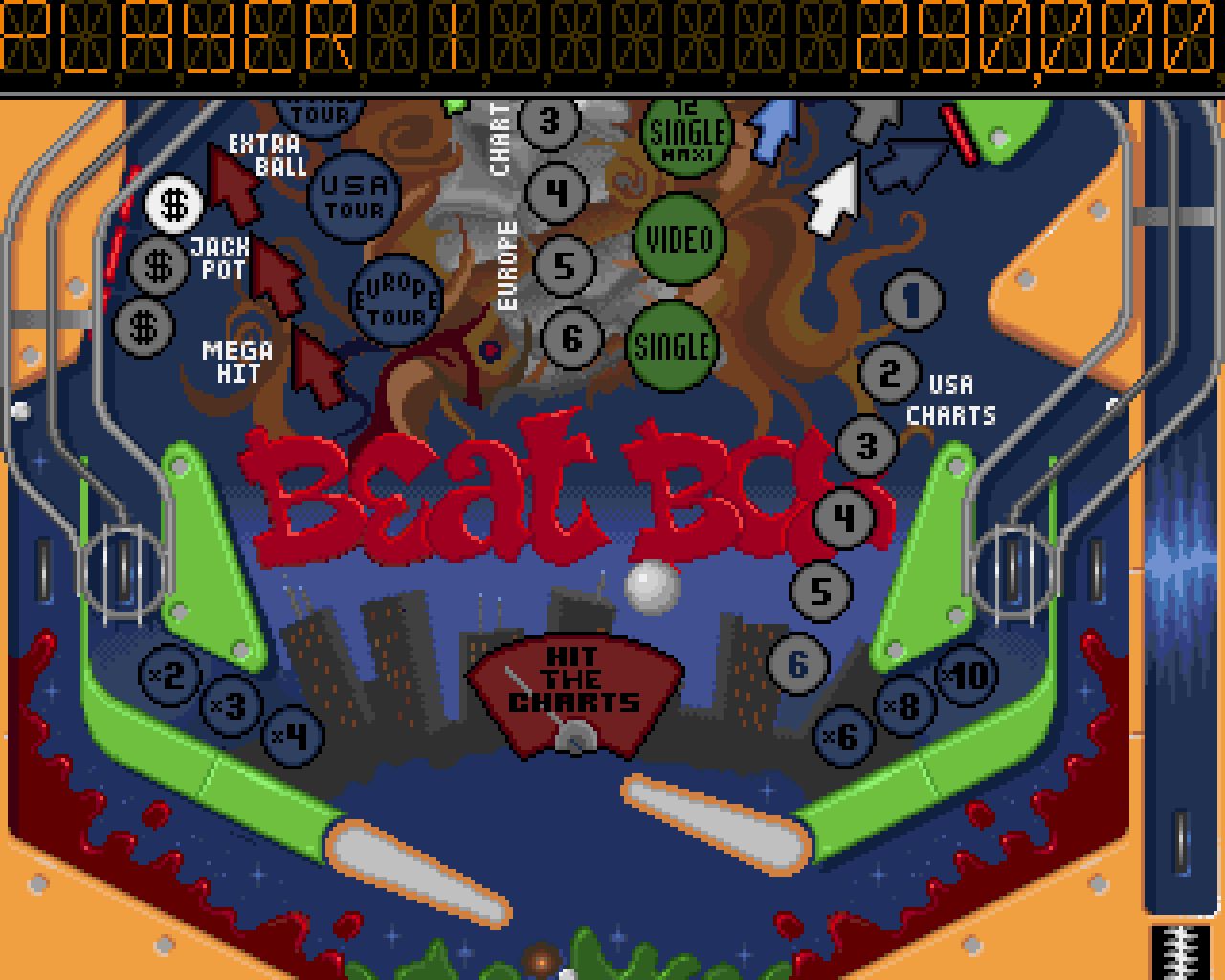
Pinball Dreams (1992)
Pinball simulators have been a thing since the very earliest days of gaming and there were several good ones on the Amiga, many of them made by future Battlefield developer DICE. This is their first and it’s a very credible effort with believable physics let down only by slightly conservative table design. DICE, like Team17 and many other old school European developers (including Returnal developer Housemarque) started off making primarily non-interactive programs for the ‘demo’ scene of the time, that was a sort of cross between today’s indie gaming and modern dataminers and hackers.
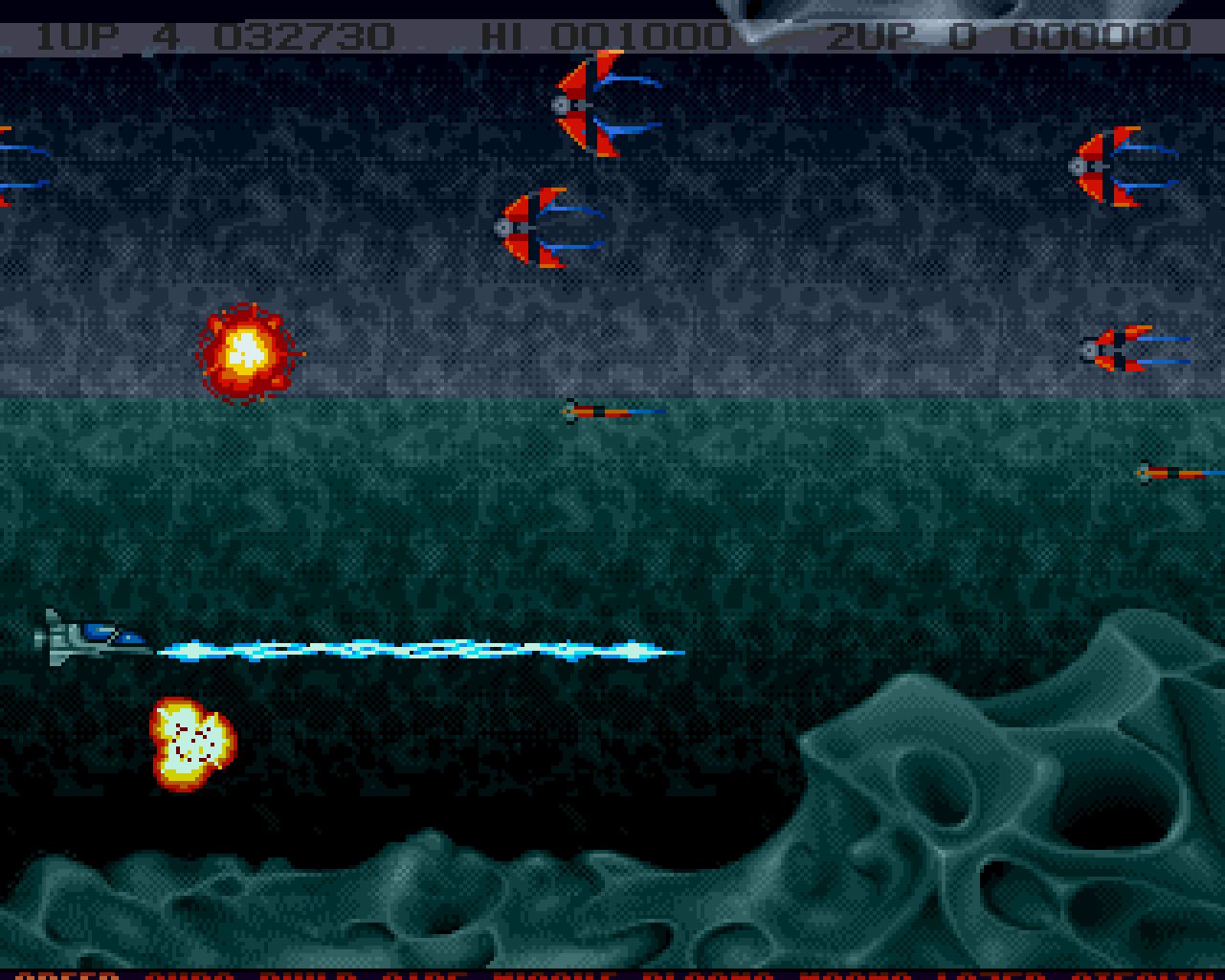
Project-X: Special Edition 93 (1993)
Like all of Team17’s early games this is a blatant clone of a popular arcade game of the time, in this case Gradius and other pre-bullet hell 2D shooters. It’s not the best example of the genre on the Amiga – we would’ve taken Apidya or SWIV before it – but the graphics are remarkably good and the game starts you off with a fairly full compliment of weapons at the start, and after you die. However, it’s still maliciously difficult and while that comes with the territory we know from personal experience how many broken joysicks that led to back in the day.
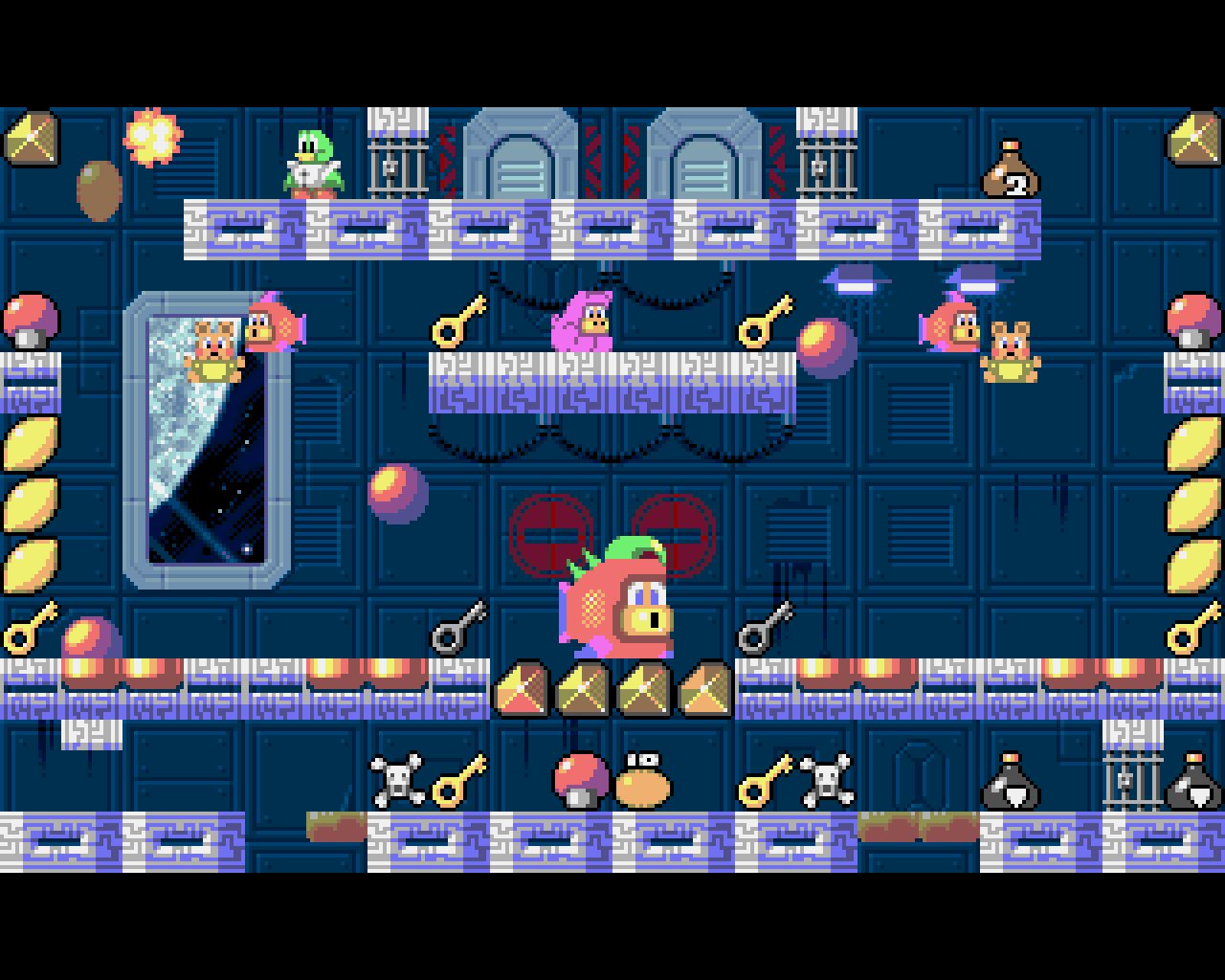
Qwak (1993)
We’ve no idea what Qwak is or why we’ve never heard of it, especially as it has more than a little in common with our beloved Bubble Bobble. The single screen platforming and bubbles rising up the screen are obviously inspired by Taito’s classic, although the game lacks a similar style of multifunction weapon. The two-player options are great though, including some where you’re actually competing with the other player, which seem to be a homage to the even older Joust.
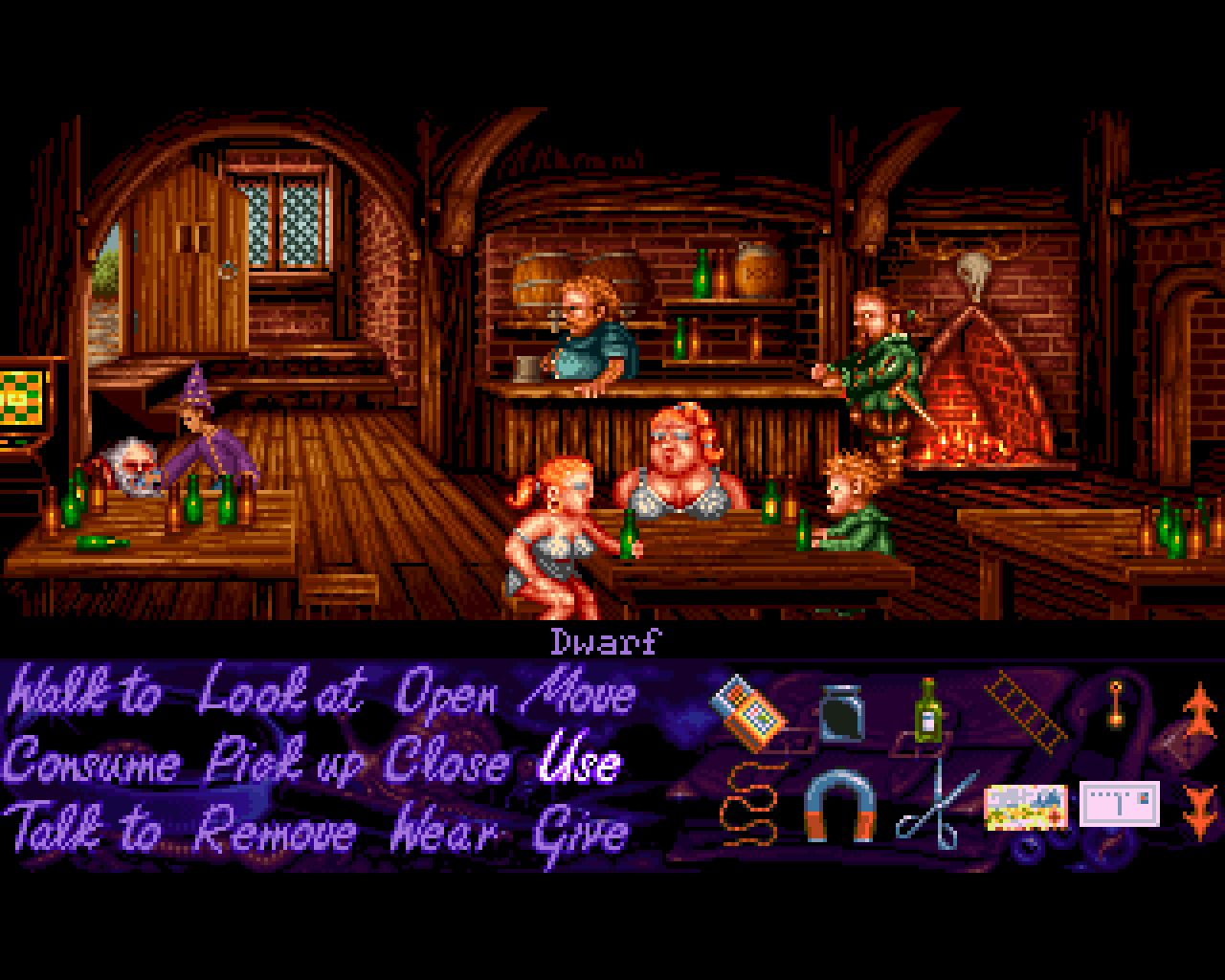
Simon The Sorcerer (1993)
This appears to be included in large part because there are no LucasArts graphic adventures on the mini-console, which is fine in theory but the problem is Simon The Sorcerer was never a very good point ‘n’ click game. It’s trying desperately to be funny – emphasis on the desperate – but rather than rolling in the aisles it’ll have you ducking down behind them, trying to escape from the cringe. It doesn’t help that the puzzles are frequently illogical and require constant backtracking between different areas. The animation is gorgeous though.
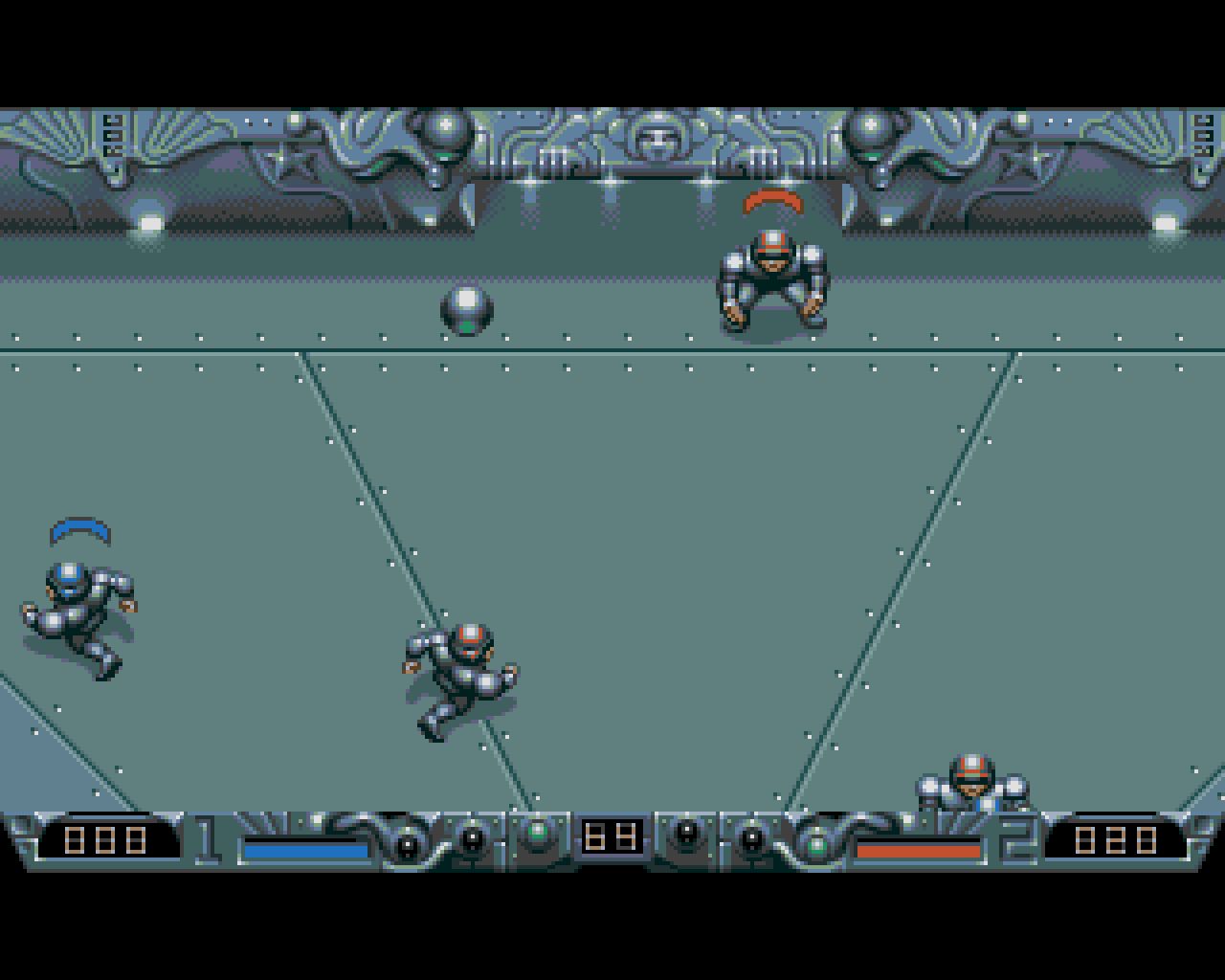
Speedball 2: Brutal Deluxe (1990)
Back in the 90s this would have undoubtedly been viewed as the best game on the mini-console, a future sports sim (yet another genre that basically doesn’t exist today) inspired by Rollerball and mixing elements of rugby and ice hockey – especially the punching people parts. Playing it today, there is a big problem in that the eight-direction control significantly limits the nuance of your movement, but other than that it holds up very well and it’s a crying shame there’s neve been a decent modern equivalent. As with all Bitmap Brothers games the graphics are timeless and the music even more so.
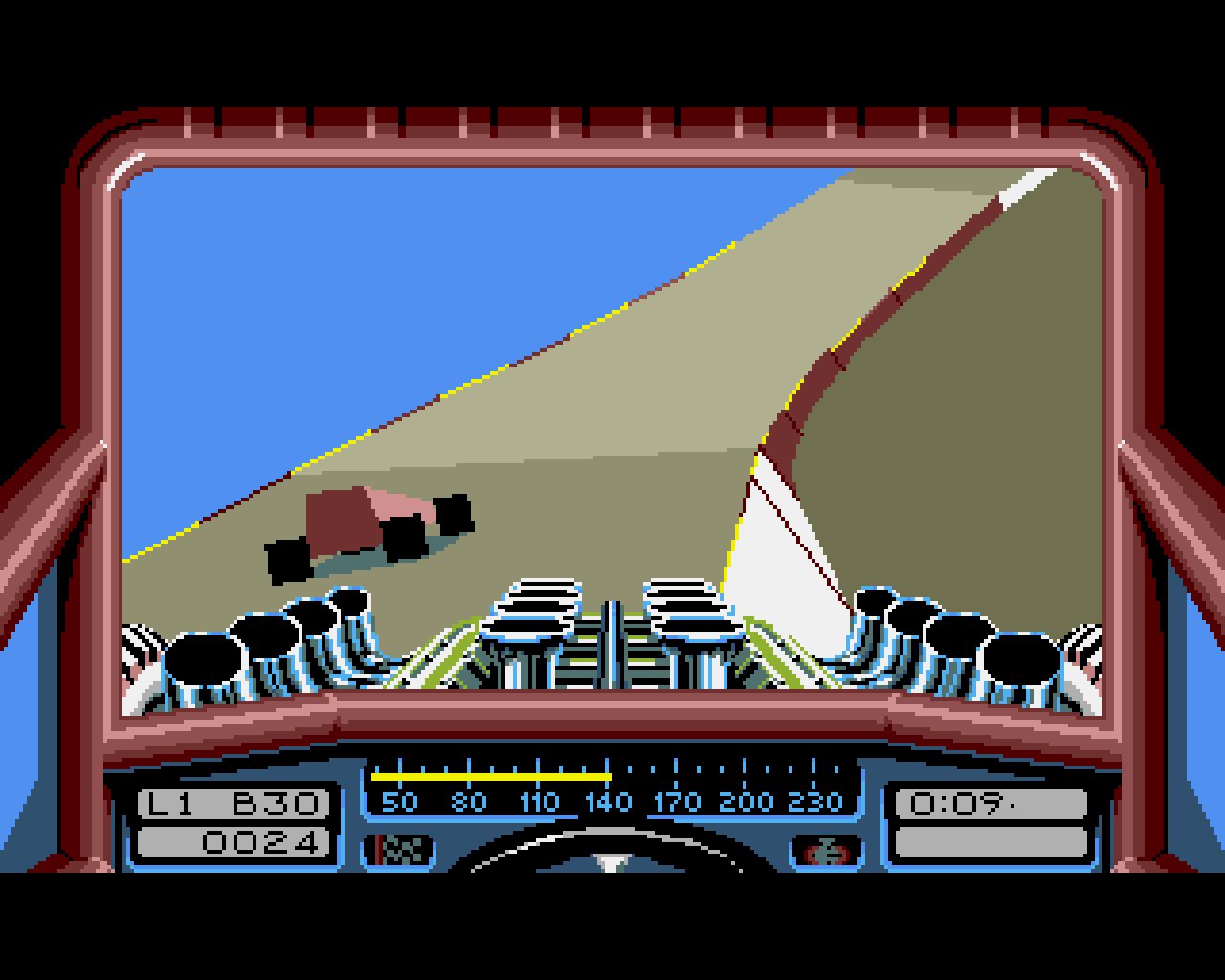
Stunt Car Racer (1989)
Of all the games on the mini-console this is the one we imagined would have aged the worse, since its glitchy 3D graphics were seen as simplistic even at the time. They were always fast and fluid though and coming back to the game now it’s surprising how much fun the game still is. The concept, from a time when racing games could be just as weird and experimental as any other, is that you’re racing atop an elevated course designed like a roller-coaster and, well… that’s it. It’s as exhilarating as it sounds, and even with digital controls and buggy physics the sense of speed and danger is still impressive.
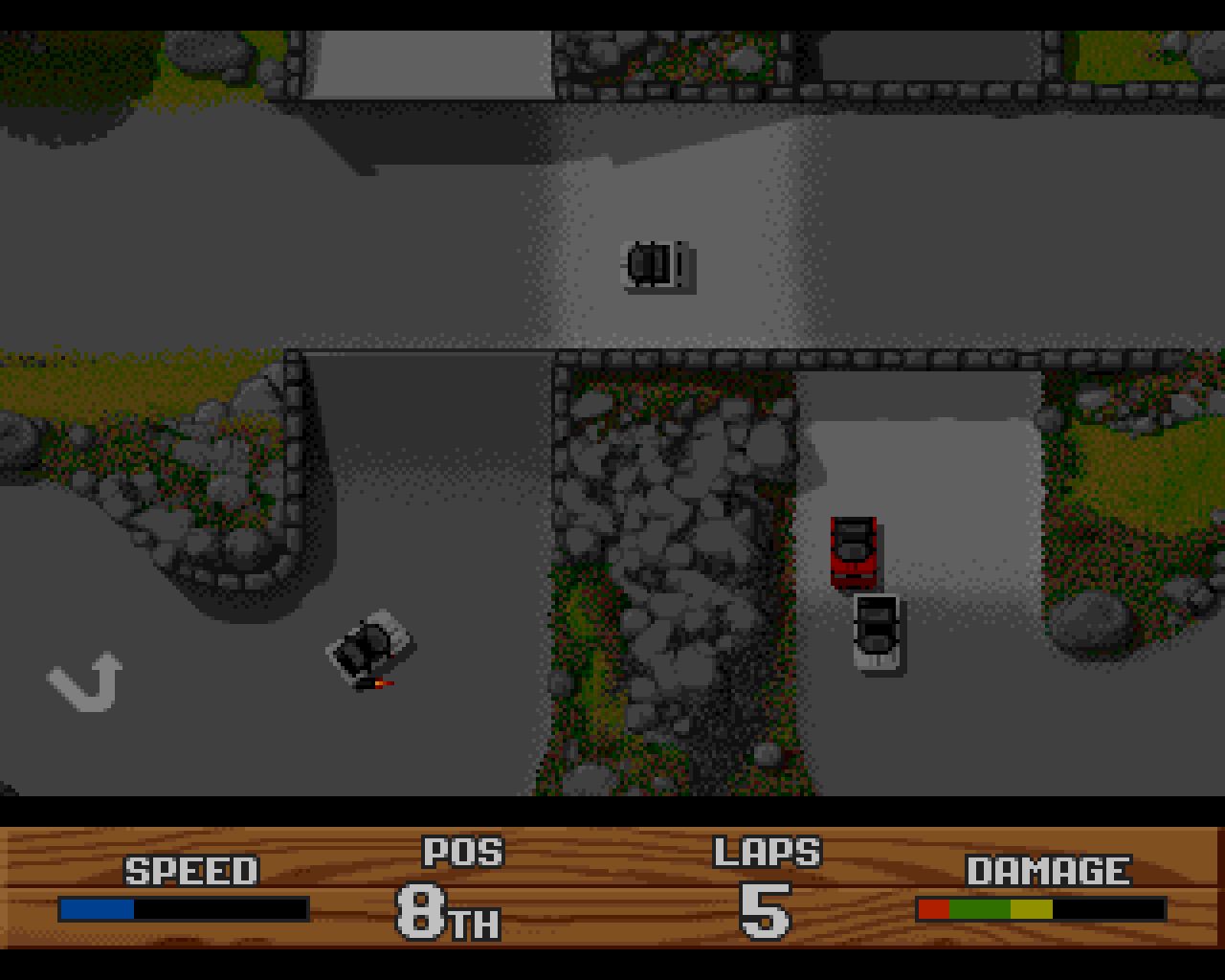
Super Cars 2 (1991)
Arguably (some prefer the original) the best of the Amiga’s many top-down racers, conceptually Super Cars 2 isn’t very different from Super Sprint, the grandaddy of the genre from five years earlier. However, the addition of weapons and a split-screen mode make it one of the best multiplayer games on the Amiga. Even if you only played it on the equally legendary cover demo this is a prime example of how no game truly ages as long as it’s still fun to play.
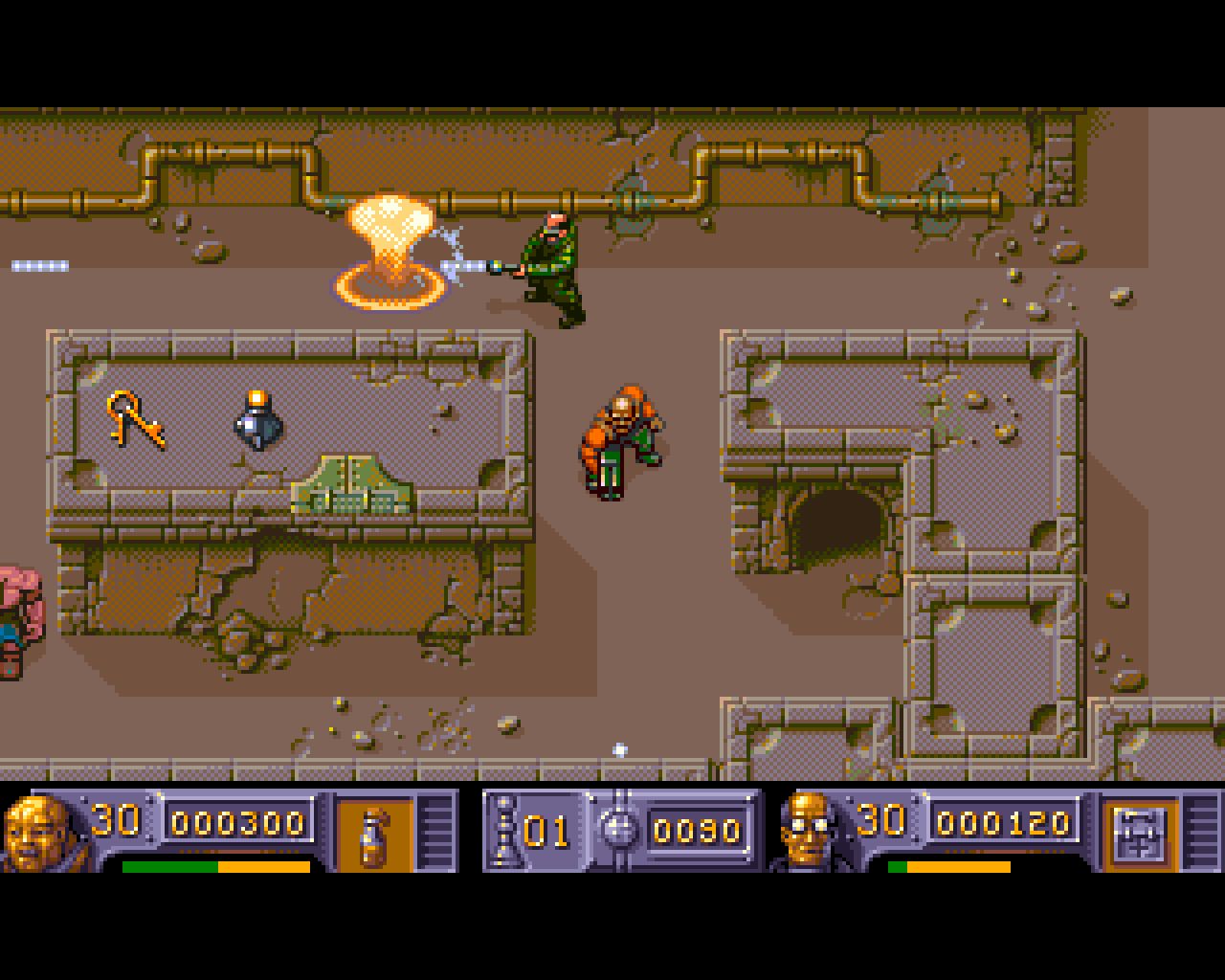
The Chaos Engine (1994)
The last game from the Bitmap Brothers’ Amiga golden age (there was a Chaos Engine 2 but that didn’t come out until 1996 and is not well known), this is a top-down co-op shooter with some fantastic graphics, even by the Bitmaps’ standards. It’s beloved by many but we’ve never been amongst its fans, given you spend so much of the game shooting things that are just on the edge of the screen, as you constantly wish you could just walk backwards and fire, or at least strafe. Sadly, the idea of using the keyboard or mouse to direct the direction of attack, like a modern day dual-stick shooter, was never attempted, and wouldn’t work in co-op anyway.
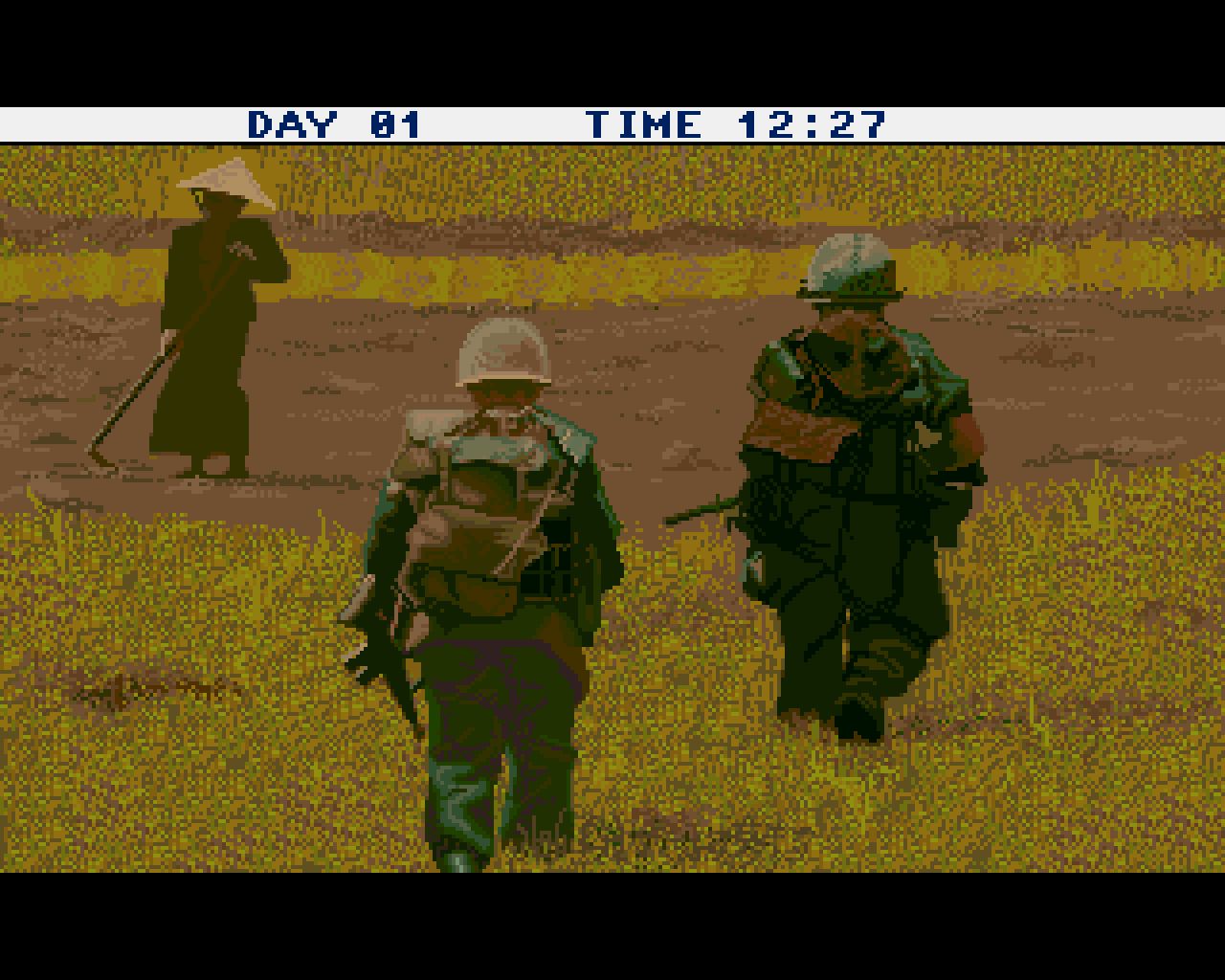
The Lost Patrol (1990)
Not a name we immediately recognised, according to Retro Games this was added to appeal to a US audience, where apparently it was popular. A strange mix of strategy, role-playing, and action game, it’s clearly influenced by Cinemaware games like Defender Of The Crown – of which there are sadly no examples on the A500 Mini. Set during the Vietnam War, you’re attempting to guide a team of US soldiers to safety and while the action sequences are risible the ambition, and the quality of the visuals, remains impressive.
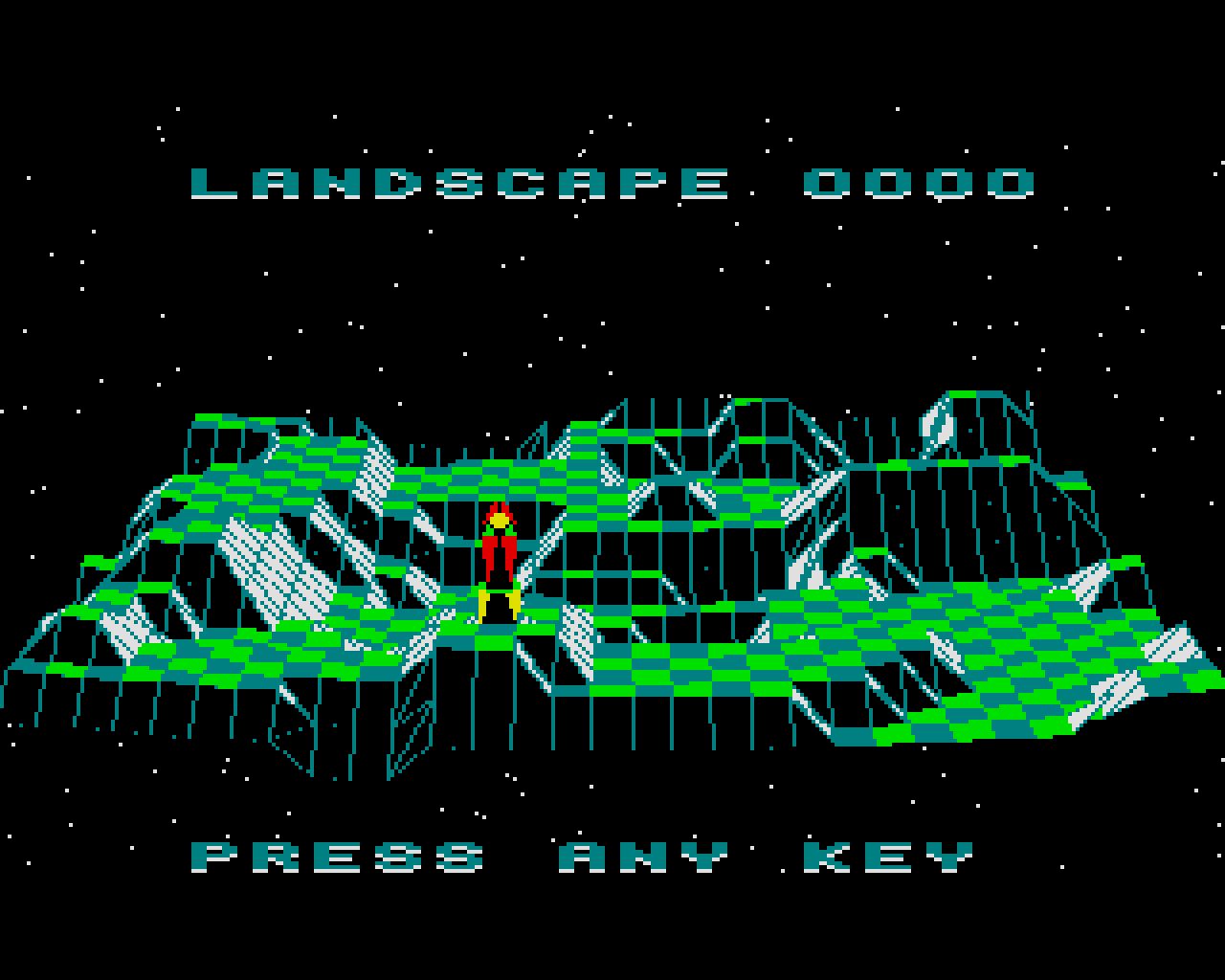
The Sentinel (1988)
Sorely underrated even when it was first released, The Sentinel (known as The Sentry in North America) should be lauded as a cast iron classic, but it’s a game few have even heard of. Created by Sunt Car Racer maker Sir Geoff Crammond, the game has no story that we’re aware of but casts you as an immobile robot trying to avoid the gaze of the titular Sentinel and instead absorb it and take its place on the highest point in an abstract 3D landscape.
The only one you can move from one spot to the other is by creating a new robot shell and teleporting into it, then absorbing the old one. You can also absorb trees, gaining energy to create rocks that can get you higher and higher, until you’re ready to take on the Sentinel – who rotates around like lighthouse.
It’s completely unique, utterly absorbing (pun intended), and it’s a crying shame this is the only time it’s been officially re-released since the 90s. Although there was a PlayStation 1 sequel in 1998, that Sir Geoff was not involved with.
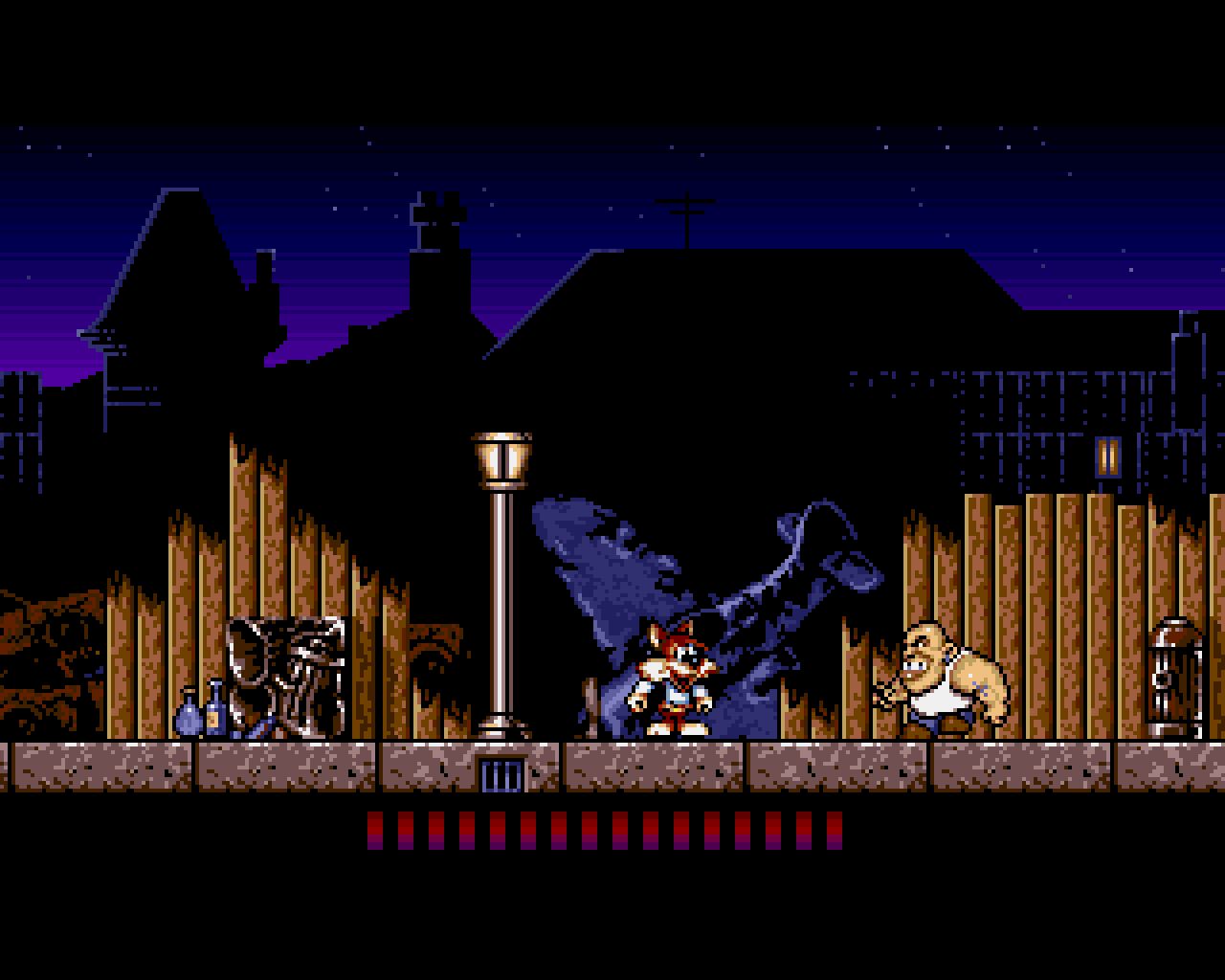
Titus The Fox (1992)
French publisher Titus will probably always be most famous for Superman 64, commonly accepted as the worst video game ever made, but they lasted all the way until the mid-2000s and in their earlier days produced some very good games, most prominently 2D platformer The Blues Brothers. The associated licence means it can’t be included here but Titus The Fox is the next best thing and despite the slippery controls is certainly in the running for the best platformer on the Amiga, with good level design, fast action, and surprisingly good visuals.
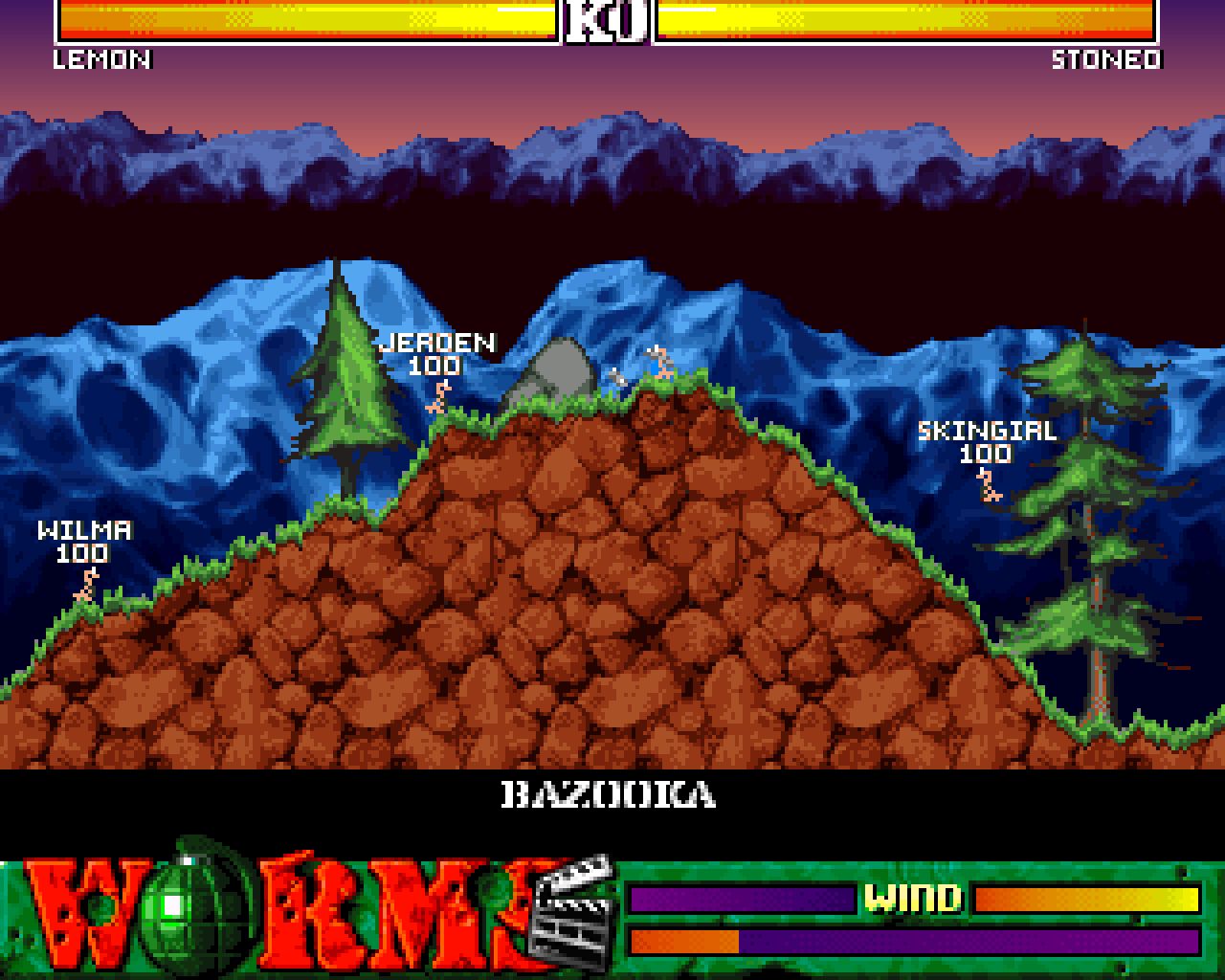
Worms: The Director’s Cut (1996)
One of very few franchises that debuted on the Amiga and is still going strong today, the 1995 original was based on artillery games that had been popular since the very earliest days of computing. Worms added a sense of humour to the usual trajectory-judging antics, with cute pixel graphics inspired by Lemming and a much wider range of physics-based weapons. The Director’s Cut was still the work of original solo creator Andy Davidson and includes better graphics, 14 new weapons (including the holy hand grenade), and an improved level editor.
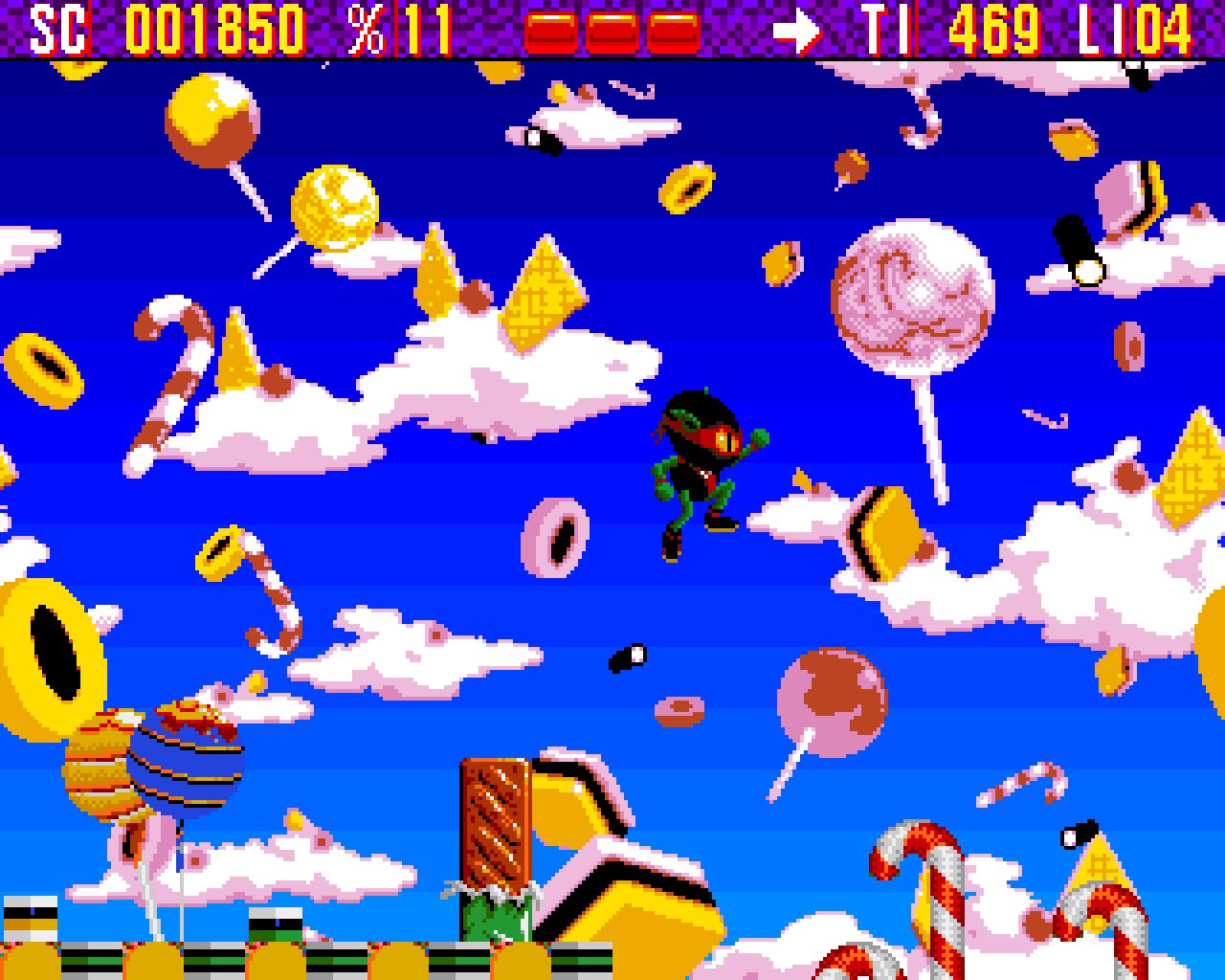
Zool: Ninja Of The ‘Nth’ Dimension (1992)
The Amiga never had an official mascot, in fact Commodore published almost no games themselves and certainly never made them. But even though it was a multiformat game, Zool, by Sheffield-based Gremlin Graphics, was probably the closest the Amiga got. It was Gremlins’ attempt to make a Sonic The Hedgehog style 2D platformer and in terms of graphics, which is all some people cared about at the time, it does remarkably well. As the recent remaster already showed though, it’s not a particularly good game, with shallow gameplay and, in this original Amiga version, fussy controls.

